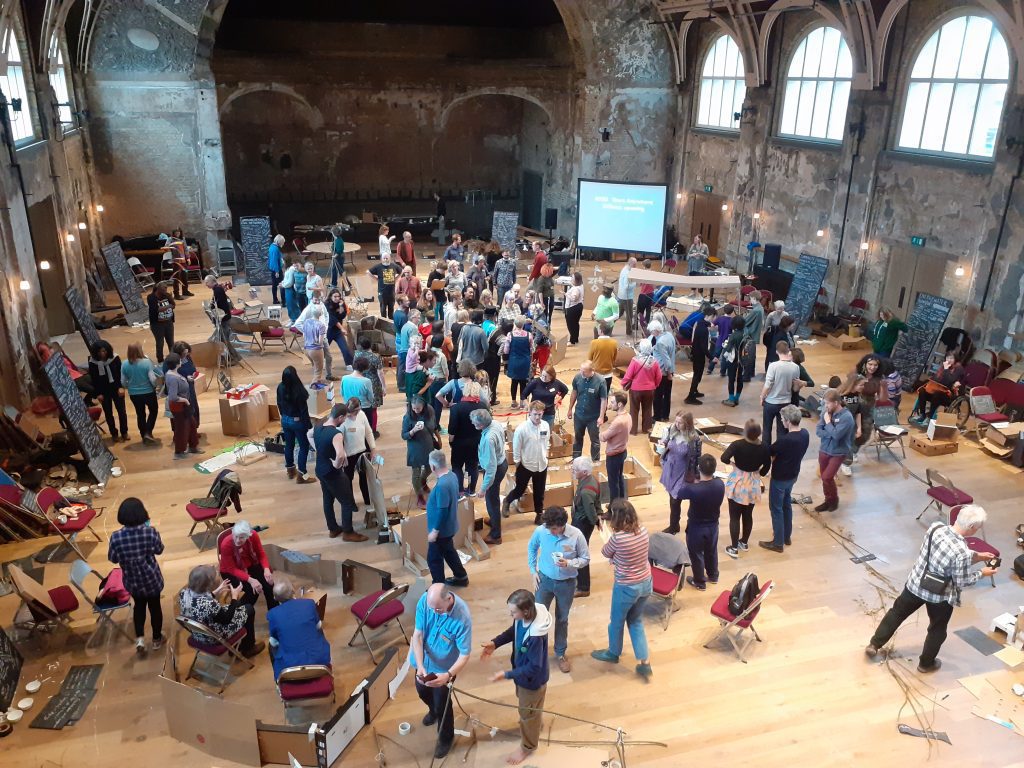‘Pop Up Tomorrow’ (London): voices of those who were there
By rob hopkins 17th January 2020
In late 2019 Transition Network sent out an invitation for people to gather in their communities to create a ‘Pop Up Tomorrow’, offering a range of ideas that could be used to bring people together to generate ‘memories of the future’.
Pop Up Tomorrow will be a time of creativity, dreaming, and sharing. It will be a space to explore our longings for what we want the future to be. It will connect us to each other and to a future worth fighting for.
As part of this we collaborated with Encounters Arts and members of the Transition Hub – London & SE to create an event in London. On October 20th 2019 we hosted ‘Pop Up Tomorrow’ at Battersea Arts Centre – a day-long interactive, immersive event focused around ‘Transition Town Anywhere’, a process that had first been done in the same room back in 2012.
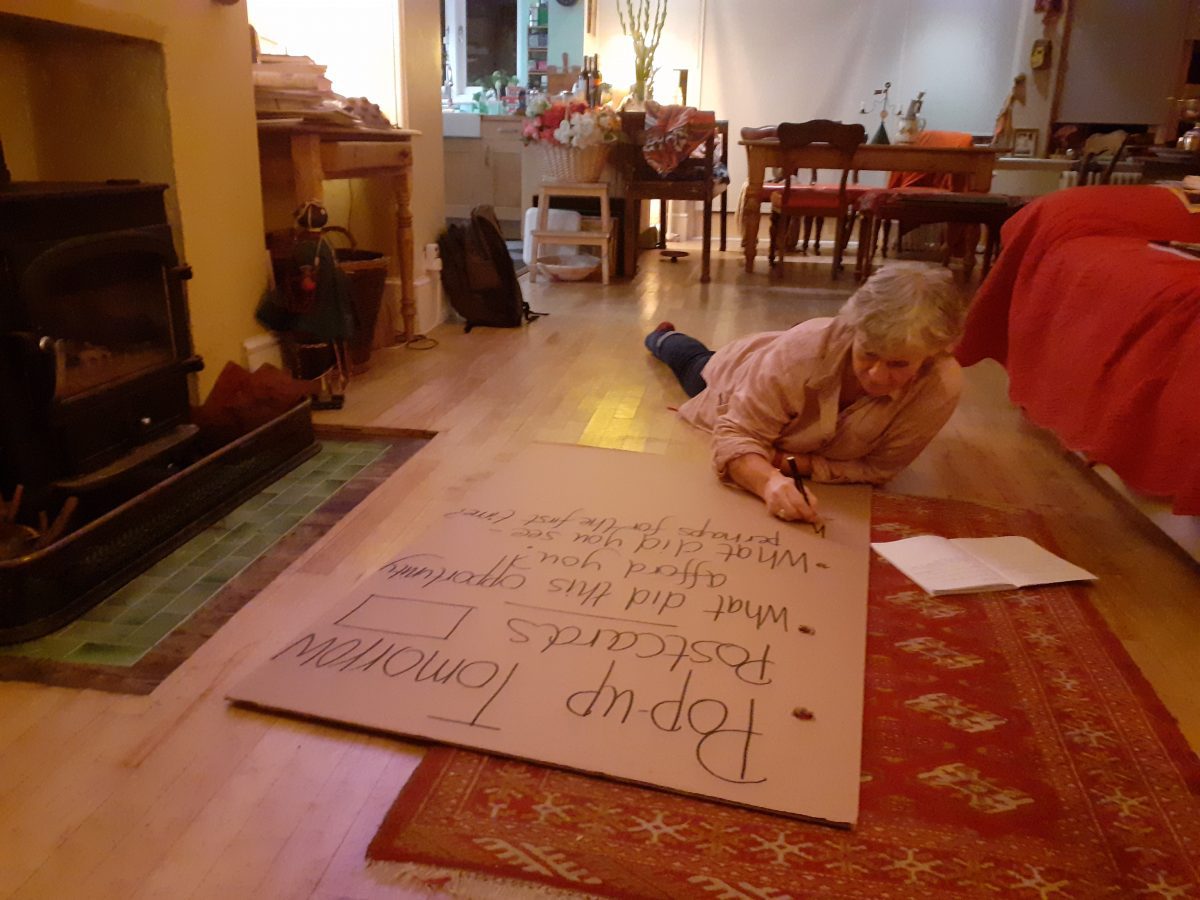
Designed and facilitated by Lucy Neal and Ruth Ben Tovim, almost 200 people came for the day, and in this blog, we hear their reflections on the day and on their experiences of being part of it, in their own voices:
“I’m not sure where I first heard about Pop Up Tomorrow, but I’m fairly sure it would have been on social media. I was cautious about committing to it at first, as it was immediately after two weeks of Extinction Rebellion and I wasn’t sure I’d have the energy for it, but I decided it would be the perfect ending to that fortnight of action”. Greta Hughson, participant.
“I wasn’t quite sure what to expect as I approached the venue, so to remind and perhaps to reassure myself, I reviewed the invitation one last time: “All are welcome for a day that will change the way you think about the future”. Nick Anim, Transition Town Brixton.
[Speaking of the weeks leading up to the event] “Harvesting willow from Clapham Common, the moment when a box of 100+ scissors from eBay arrived at my door, visiting the Grand Hall with Rob and both of us getting giddy with excitement … and the work of putting on an event, at times difficult, demanding and stretched. Thank goodness for an AMAZING team, most of whom were involved in the XR Autumn Rebellion. We never met as a whole team until the night before the event!” Richard Couldrey, Transition Town Tooting and the event’s Production Manager.
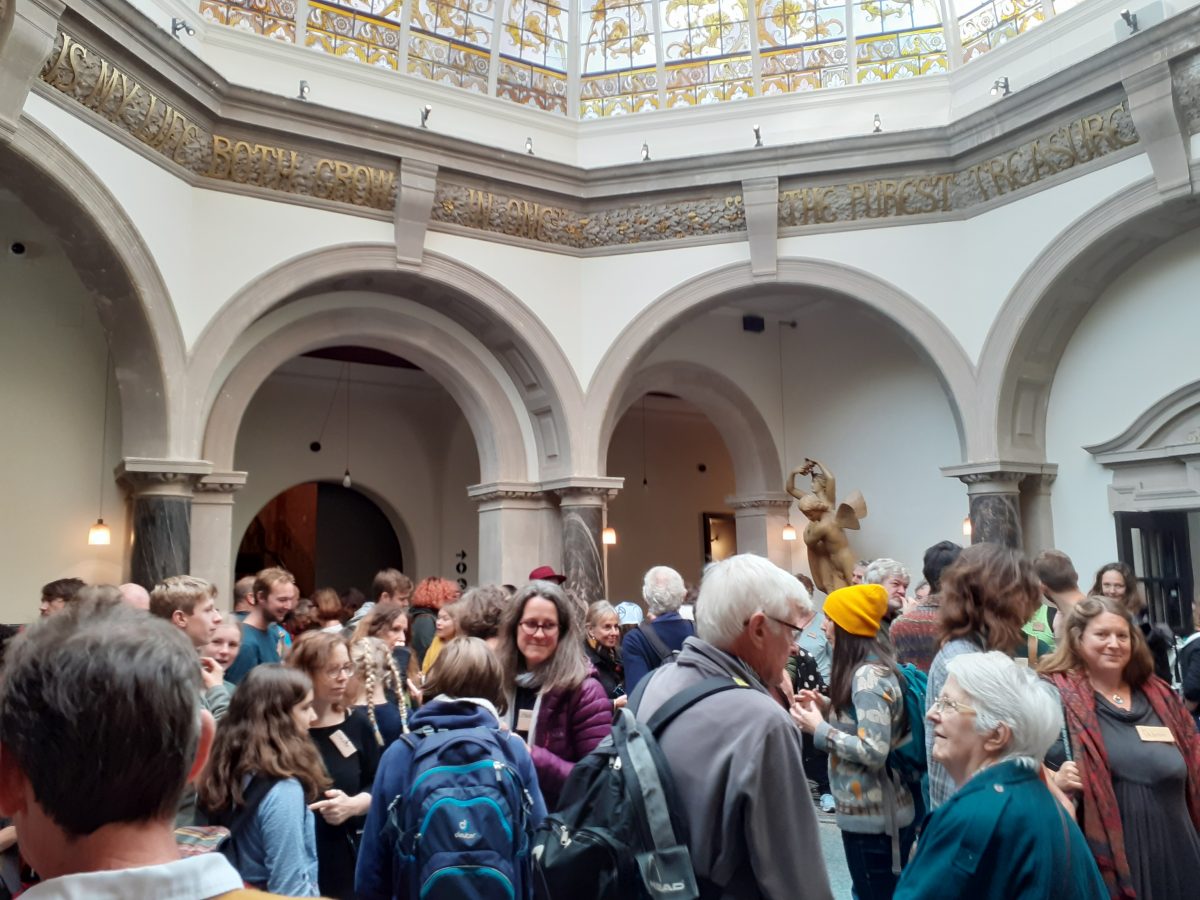
“I heard about Pop Up Tomorrow through various social media platforms, as well as from connections within the London & SE Transition network, which I am a member of. Whilst, as an activist with Transition Town Brixton, I was familiar with the visioning and backcasting exercises integral to Transition’s approaches to community-based and community-led sustainability initiatives, I knew this event would be different, on a much bigger scale”. Nick Anim, Transition Town Brixton.
“Since first facilitating this process for the Transition Network Conference in 2012, Encounters Arts have delivered it with communities in Eastleigh, and Dene Valley and Eldon. I was looking forward again to seeing how a different group of people would respond to the invitation to vision and enact the future”. Ruth Ben Tovim, Encounters Arts.
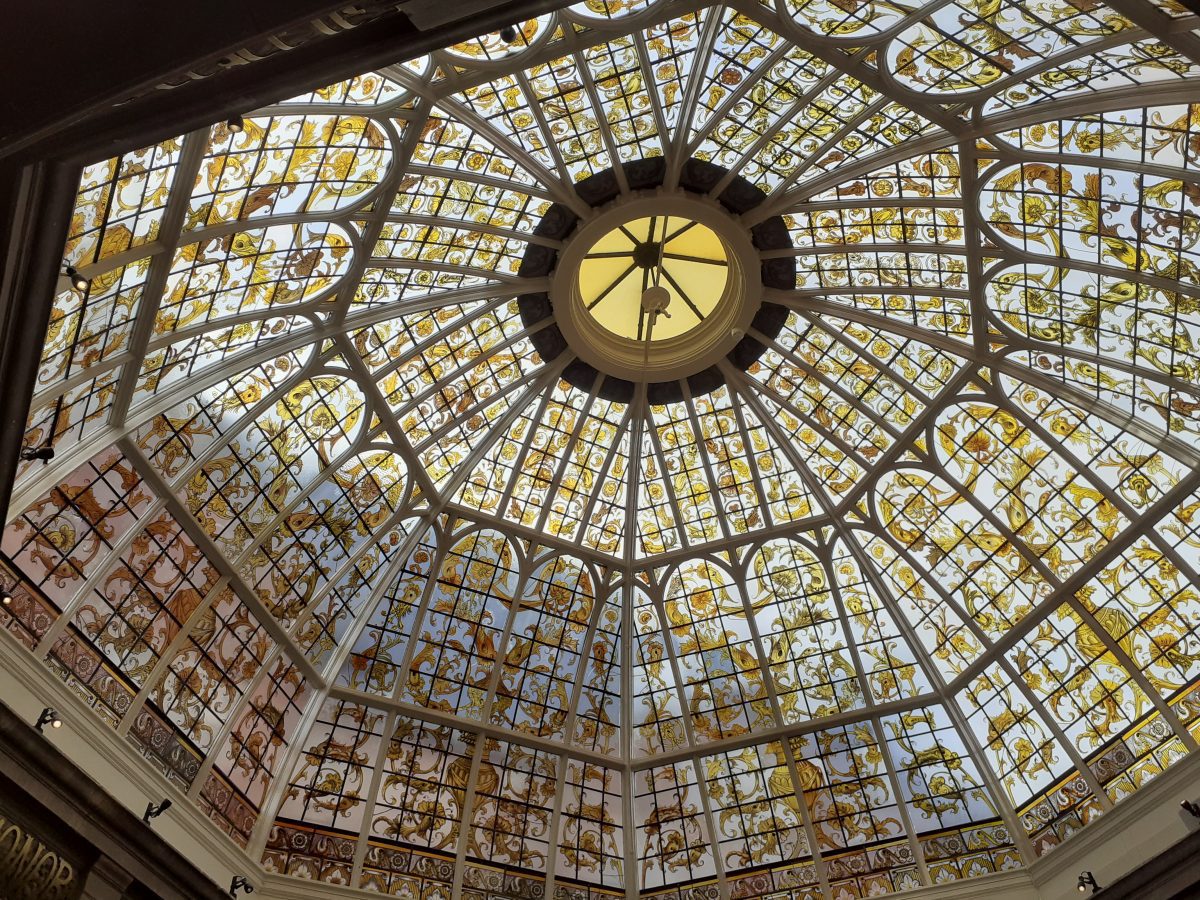
“I was moved to step into the Grand Hall again and replay these past events in my mind. They gave me confidence something miraculous could happen again – I was excited about that. I recall [from when we did it before] people’s readiness to play”. Lucy Neal, Encounters Arts.
“I had done the original version and never forgotten it, so I was excitedly looking forward to it, although I was helping this time so had a different perspective”. Hilary Jennings, Transition Town Tooting.
“I was hoping for a real mix of people in the room, from London and beyond, from every section of society, not just the “usual suspects”. I was hoping all those who came had a grounded leap of the imagination into the future so they could feel, see, taste and touch a vision they might be working really hard towards today. I was hoping that everyone would realise that it will take everyone, we’re all Superheroes, but we can’t do this alone and it’s going to take huge dollops of forgiveness along the way as we “do it all imperfectly” as Ani Difranco sang. Now seems to be the most important time to imagine together”. Richard Couldrey.
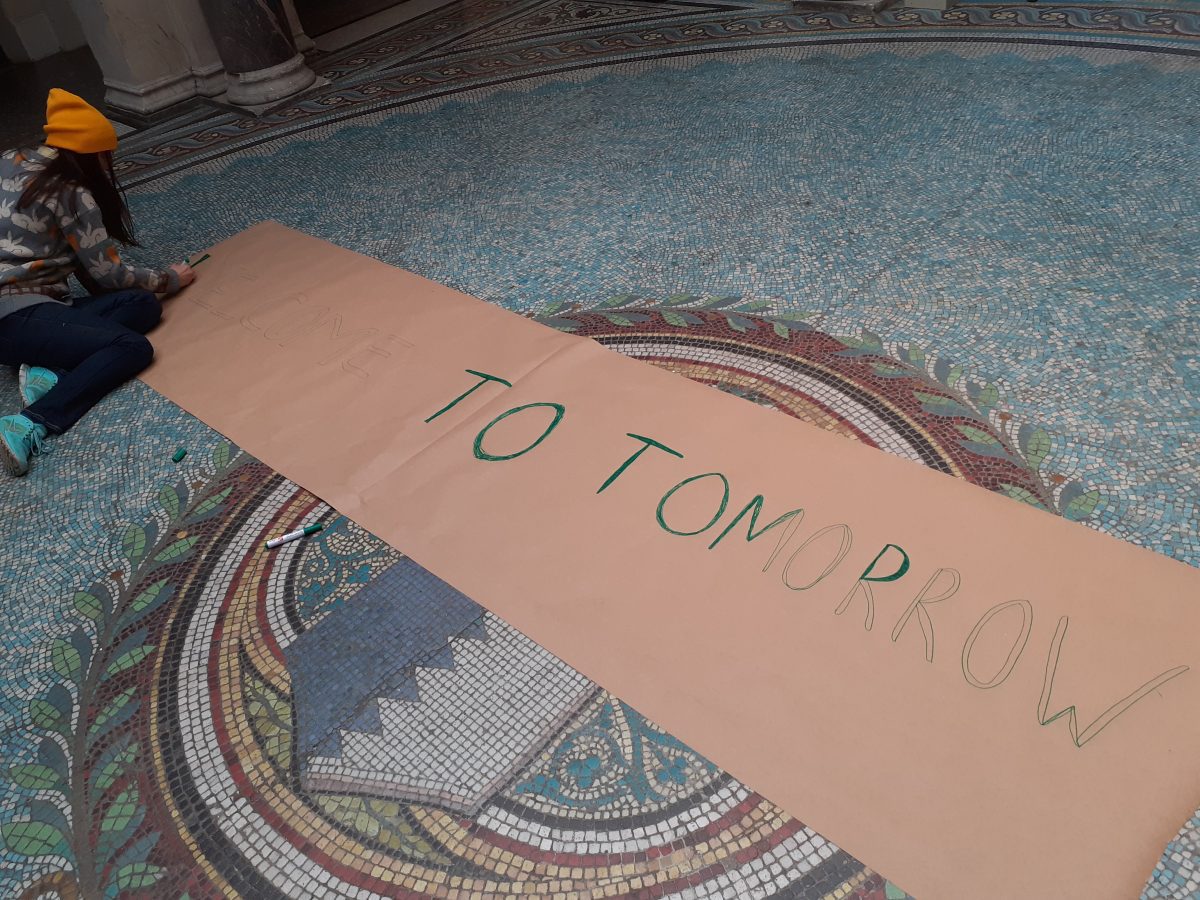
“I had volunteered to help out on the day as someone from the London Transition Hub and a London-based member of the Transition Network team. I didn’t feel I had much sense of what the event was going to be like, but knew we’d be building stuff together to help us imagine and step into the future and I felt really curious about what that would feel like”. Sarah McAdam, Transition Network.
“It was a very early start and the set up was momentous. We had a lot to do and the clock was ticking. The lift to get tables and chairs into the space wasn’t working and the wonderful team of volunteers were sweating through lifting piles of chairs and cardboard and tables into the space. I remember directing people where to put things and running around a lot!” Ruth Ben Tovim.
“I got chatting to a few people while we were waiting to go into the Great Hall, and quickly felt at home, among friends. The doors to the Great Hall were closed. There was quite a sense of anticipation building up as we waited to be let in”. Greta Hughson.
“I was part of the reception team and I really enjoyed greeting people as they arrived. It was clear that most participants had no idea what to expect, some were long-standing Transitioners and others had come on a bit of whim having seen something about the event on social media. Many mentioned they had been involved in the XR protests that had taken place across London over the previous fortnight and they were clearly still feeling the impacts (positive and negative) of that experience”. Sarah McAdam.
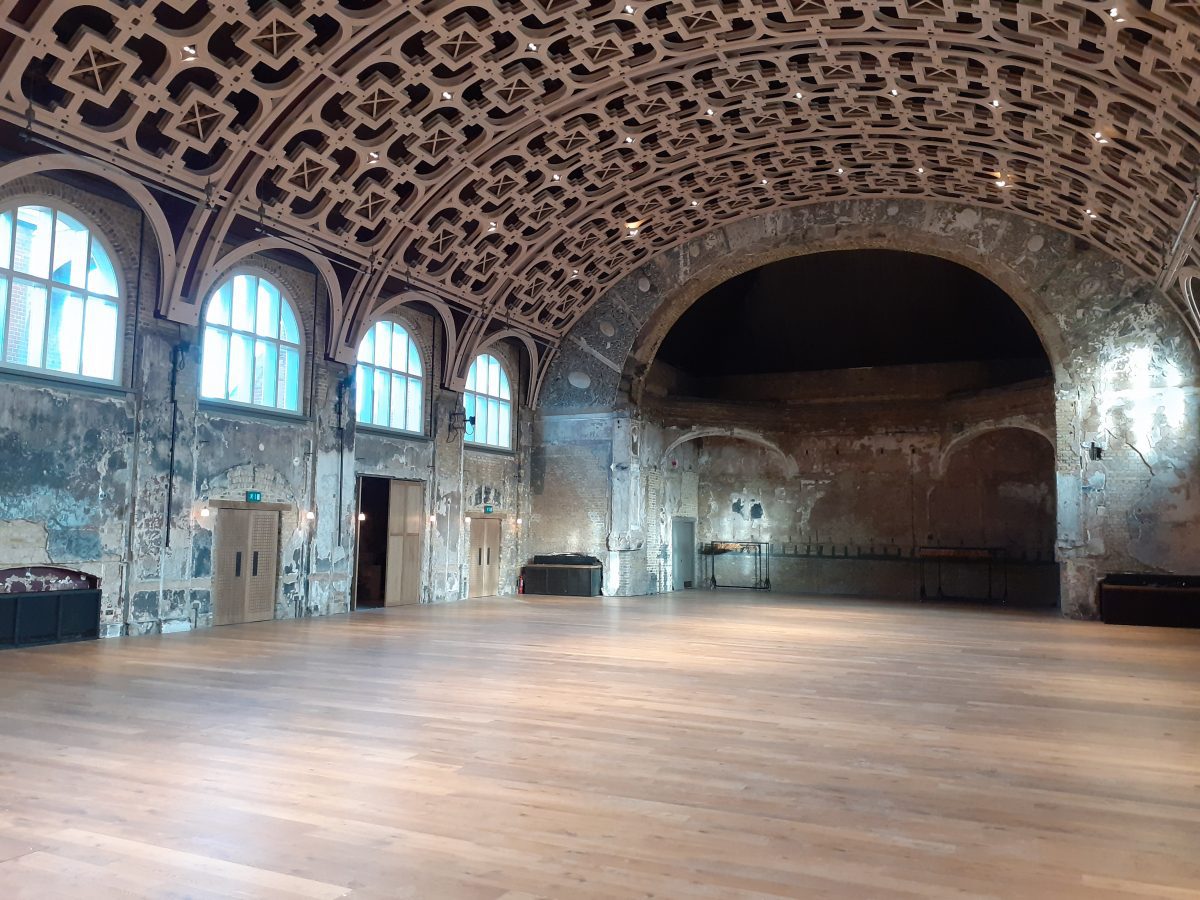
“I could not get out of my mind that the Grand Hall had burnt to the ground 3 years earlier and that superhuman efforts of imagination, good will, hard work and determination the Hall had seen it rebuilt – beautifully. Remarkable things really are possible. I felt this all fed into what we were there to do that day”. Lucy Neal.
“As the room began to fill, I retreated to a corner to get a better panorama of the participants present. With approximately seventy people present in the room, I counted only six that I could categorise as belonging to racialised minority groups (RMGs). Like others I had just spoken to, I promoted the event as widely as I could. In my case, I focused my efforts specifically on speaking to people of Afro-Caribbean descent. Whilst many people had indicated an interest in the overarching theme, far more expressed reservations; Sunday remains a sacred day for church, family and rest”. Nick Anim.
“I felt really excited when the doors opened and we walked into the Great Hall. It’s a beautiful room and there was something almost theatrical about the way that the whole audience entered as a group”. Sarah McAdam.
“Noticeably entranced and subdued by awe, here we all were, a hundred and sixty TN attendants locked into, and seemingly overloaded by, a sense of communal incredulity, staring at the scarred but sacred walls of the Grand Hall, which stood in marked contrast to the exquisite patternings of the stunning lattice ceiling. The subliminal symbolisms connecting this space to our presence and purpose were quite surreal and overwhelming”. Nick Anim.
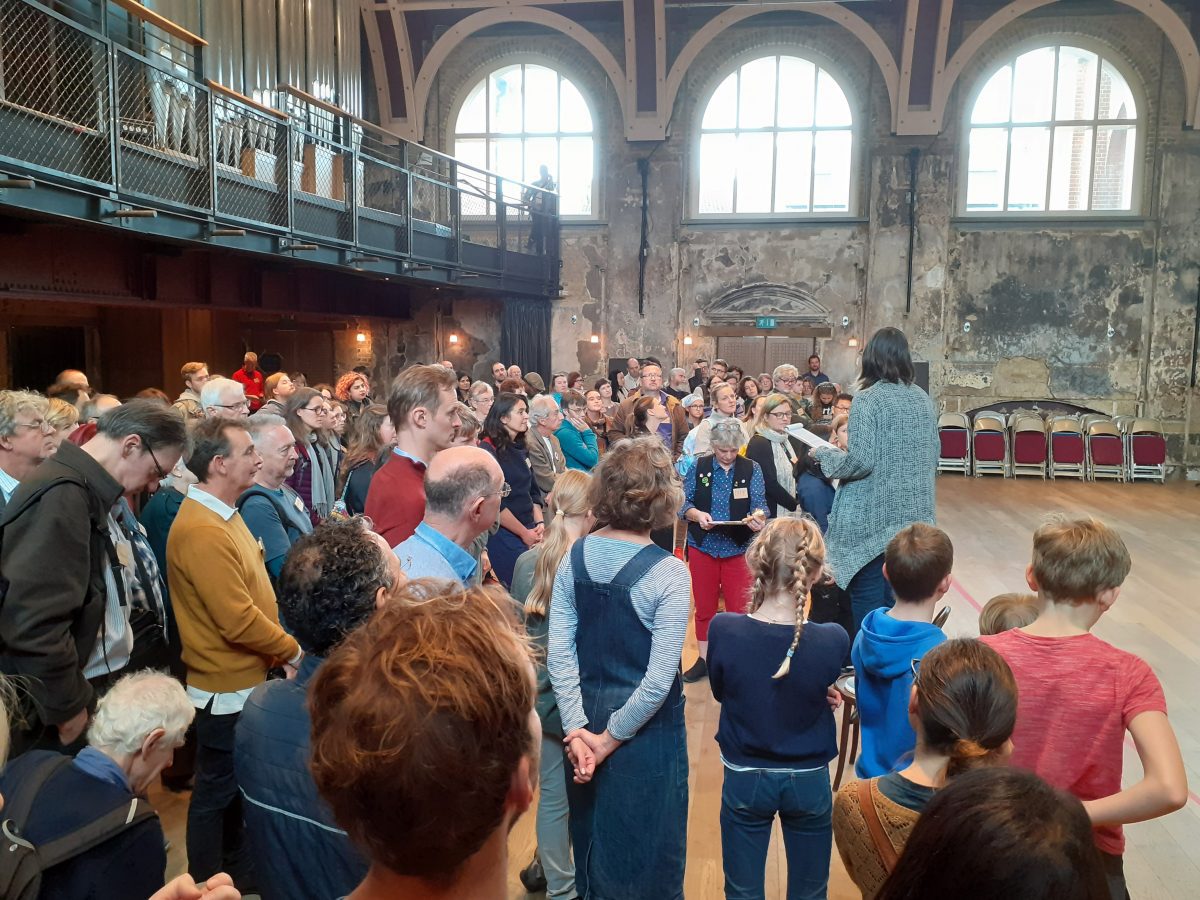
“When the hall first opened with the expansive music going on, watching people slowly walk up to the red ribbon was wonderful. They slowly walked in, they looked up, looked around, then slowed to a standstill as Ruth welcomed them. It had a definite feeling that ‘this was a moment we were all in’”. Rob Shorter, volunteer and participant.
“I held the red ribbon and could feel the excitement as people counted forward the years”. Hilary Jennings.
“Honestly, I think I felt a bit silly counting forward, but it did have the effect of bringing us all collectively into an imagined future”. Greta Hughson.
“I couldn’t stop smiling whilst the event was introduced. What a magical and special occasion this was to be a part of. I felt very lucky to be there”. Rob Shorter.
“It’s a key moment of staging that requires an early and instant surrender to make-believe. We all have to do it together. And then keep gently reminding and reinforcing”. Lucy Neal.
“I struggled a bit at this moment. The countdown felt dramatic, but I could feel myself struggling a bit for context and meaning. I felt a little rushed and ungrounded as I stepped into a future which seems so uncertain from my perspective here in 2019. What future was I imagining? The fact that I was stepping into Transition Town Anywhere left me feeling a need for context – was this neighbourhood in a place that was experiencing flooding, drought, civil unrest, the breakdown of public services, new waves of migration? I could feel that part of me wanted our exercise in collective imagination to be more rooted in the real challenges that people are experiencing now and that we will face together in the future”. Sarah McAdam.
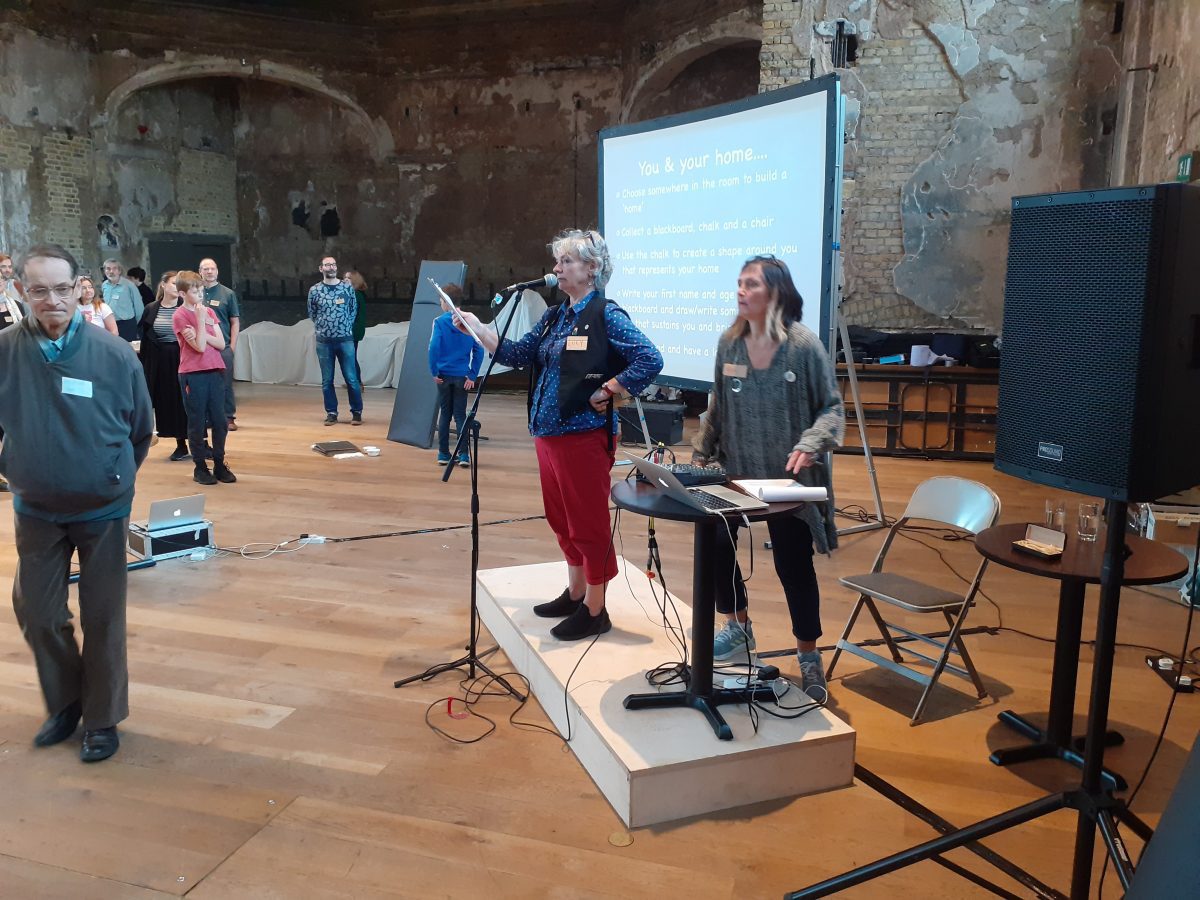
“Admittedly, from a perspective of realism wrapped in self-consciousness, this process initially felt a bit strange; we were, after all, being asked to consciously uncouple ourselves from the here and now, allow ourselves to dream a little, imagine a lot. Contrary to my intuitive and perhaps somewhat institutionalised reservations, this simple process was surprisingly liberating. Imagination, if and when unleashed, is indeed the language of the soul”. Nick Anim.
“We began by marking out our individual ‘home’ space, then contemplating on ‘something in your life that sustains you and brings you joy’, followed by working in pairs to exchange stories around one of several suggested themes with our nearest neighbour, then walking around to read other people’s stories on the personal 2030 tablets (chalkboards) we had been supplied with and, finally, exploring how we could work together in our neighbourhood groups to create a zero carbon street community that supports us and allows us to flourish”. Nick Anim.
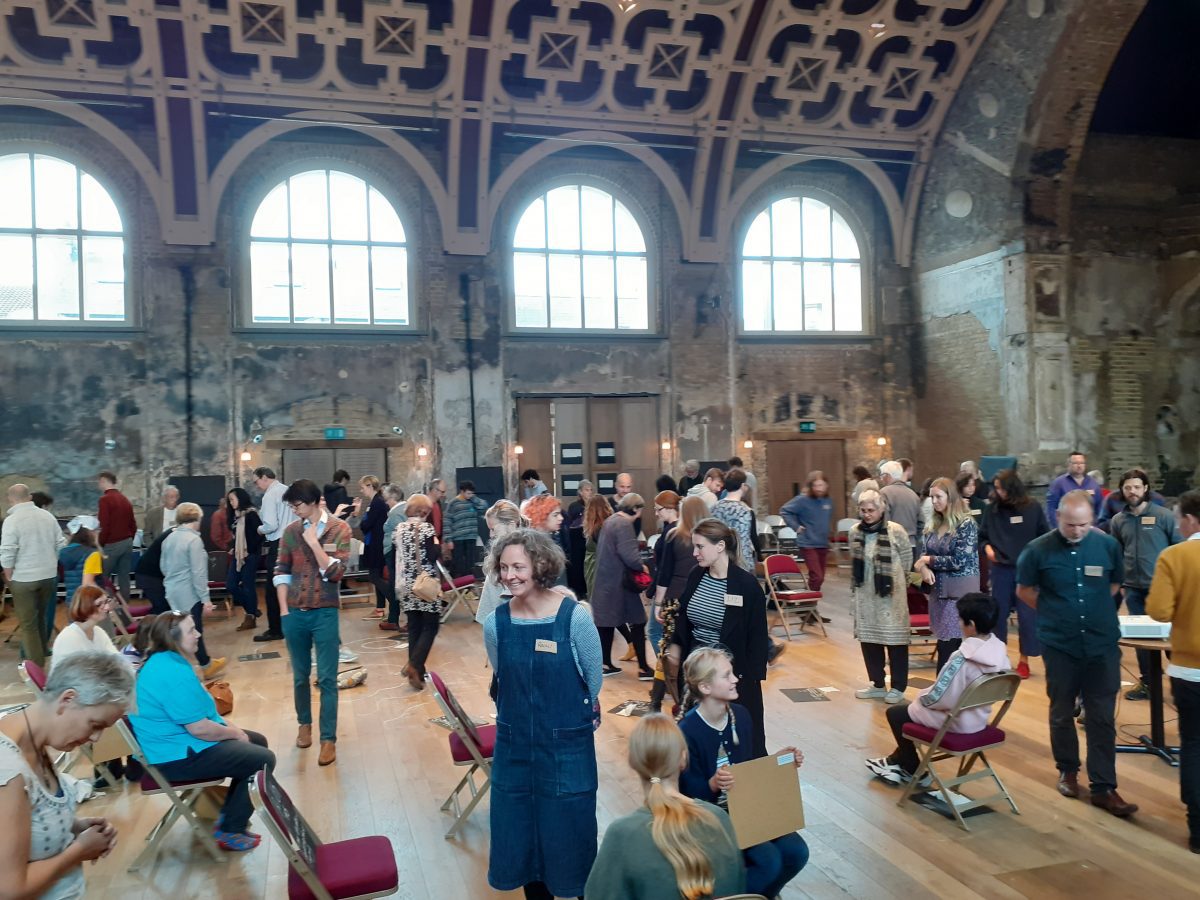
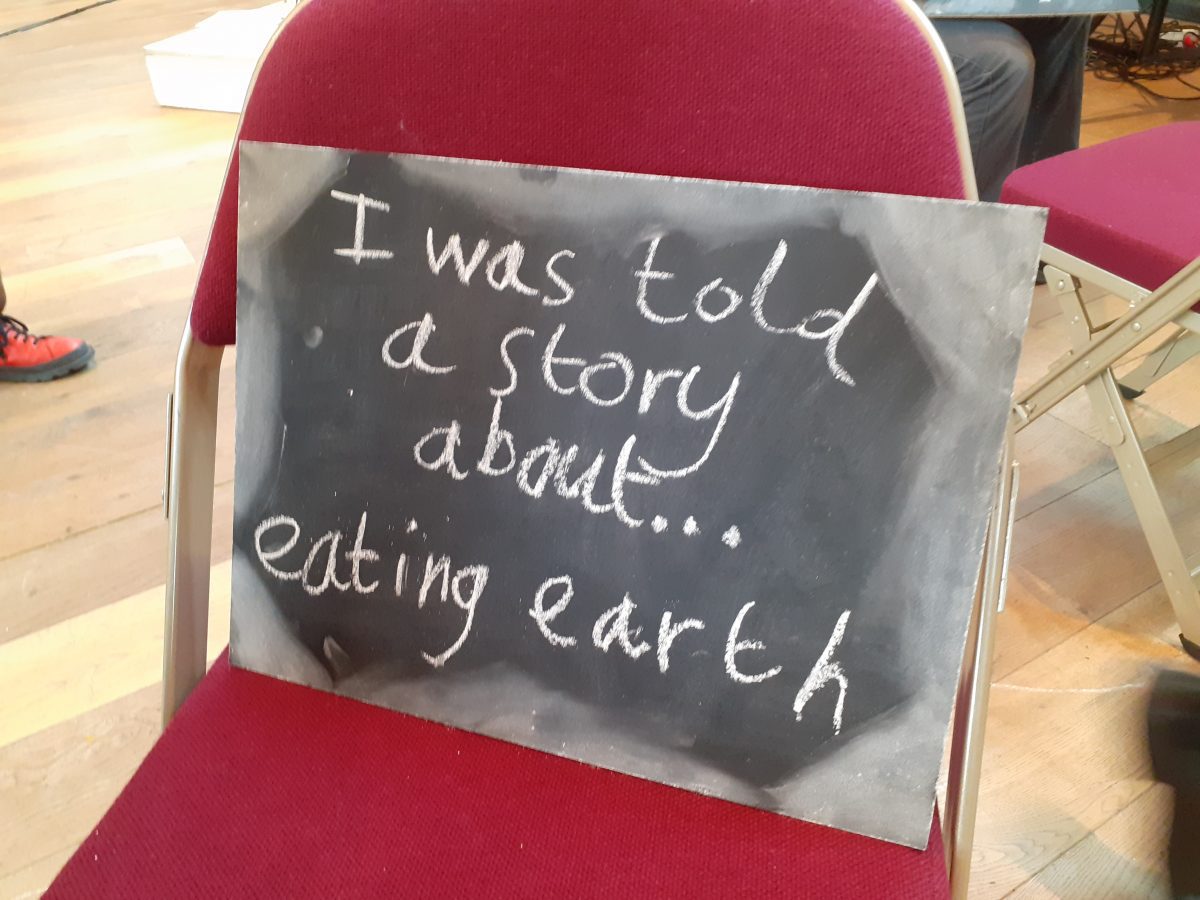
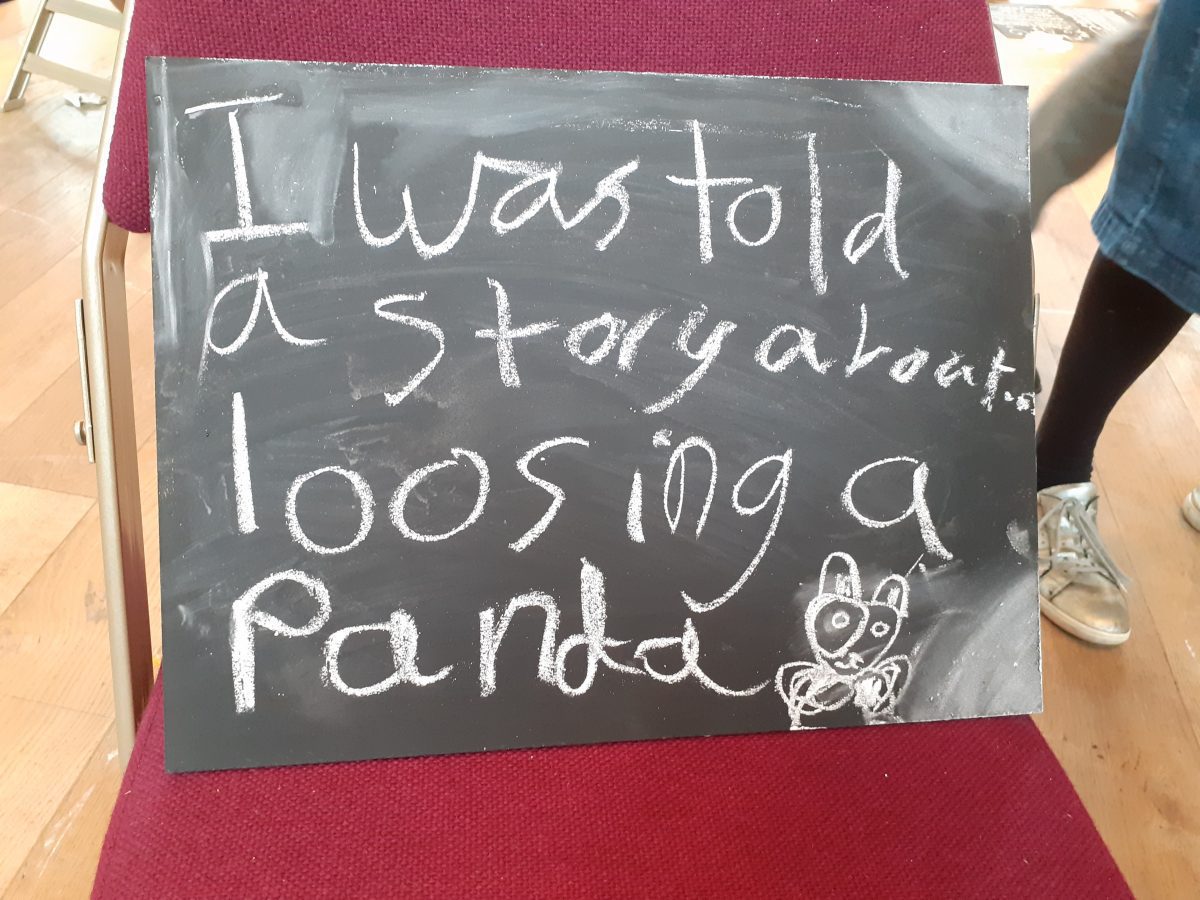
“There was a palpable sense of shared endeavour in the room… quiet focus, generosity and great listening”. Richard Couldrey.
“It surprised me how fast and focused everybody was when they were writing requests on the theme blackboards so many ideas pouring out of people – the zero carbon solutions much more visible, and in people’s imagination than I think they were 7 years ago when we first did this activity”. Ruth Ben Tovim.
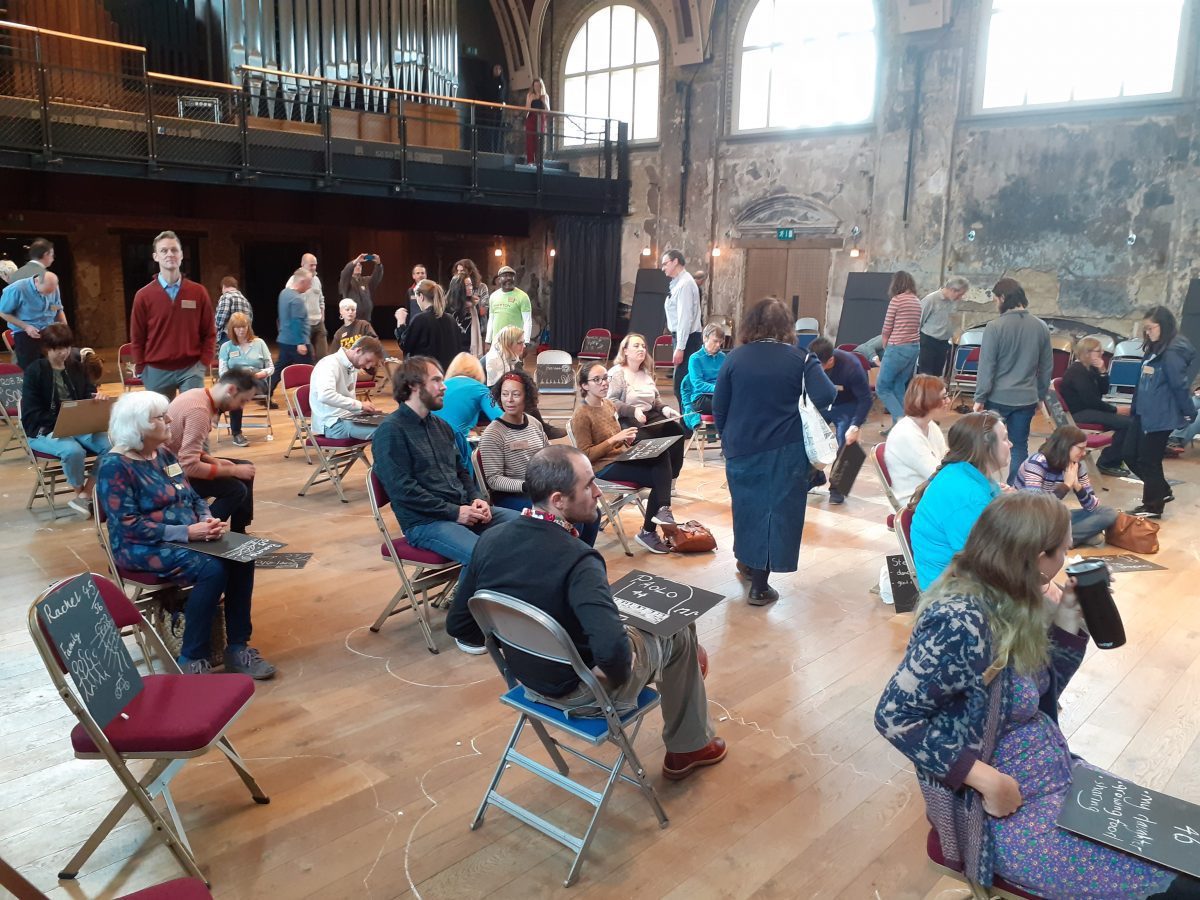
“I really enjoyed the first part of the process. I was surprised how instinctively I reached for ‘something that sustains me’ and the conversation prompts for the initial pairs/immediate neighbours were really good. I wish every interaction came with a choice of such great words – celebration, love, family, nature – to enable us all to skip over small talk into storytelling about the things that really make existence what it is”. Greta Hughson.
“I loved the mixing of young and old in conversation”. Hilary Jennings.
“Walking around seeing what a lot of people had written on blackboards about what they imagine will bring them a sense of joy or wellbeing in the future moved me, it was tender, heart-warming and beautiful to read, a reminder that whatever happens and wherever we are that holding your child’s hand, eating an apple from a tree, cooking for your family, taking a walk in nature, will still be bringing people joy and connection”. Ruth Ben Tovim.
“I love the everyday quality of people’s answers – things people already have in their lives like neighbours, care, curiosity and connection”. Lucy Neal.
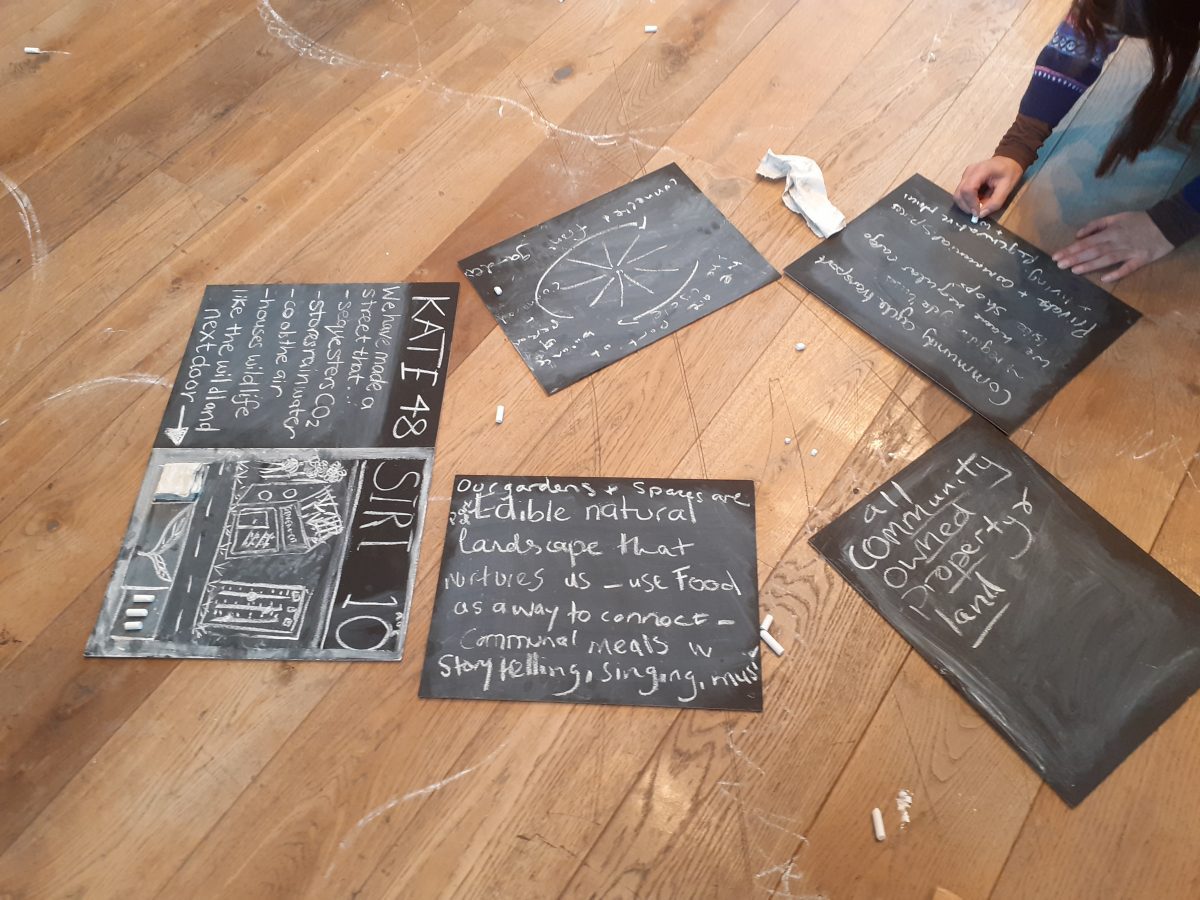
“Joining up with the small group of our neighbours, in this town called Anywhere, was a delight. We quickly established common ground and I felt an immediate sense of neighbourliness with them – throughout the day when we passed each other in the hall, we would acknowledge each other with a ‘hello, neighbour!’ One of the first actions we intended to take was to ‘dig up the road’, which I’ve thought of often since. Digging up the road seemed such a great symbolic act of reclaiming space and liberating nature”. Greta Hughson.
“The moment that touched me most was when we walked around the room looking at each other’s blackboards with the things that sustain us and give us joy written on them. I found it deeply connecting and actually quite overwhelming. What if we did that simple activity across communities in the UK, across divisions that have arisen from not understanding one another, from not listening to one another, how powerful could that be?” Rob Shorter.
“In 2019, I live in a pretty anonymous London flat amongst a pretty transient population – as soon as I get to know my neighbours, they move on. In this imaginary 2030, I found that I was imagining myself wanting and needing to share much more with my neighbours – to grow things with them, eat together at least some of the time and share appliances, tools and services. I could feel how much it mattered that they were people I could get along with and who would bring skills and energy to what we were doing together. It really helped that we started by telling each other a little about what we each loved and valued”. Sarah McAdam.
“I was in a group, and we settled on creating a space where everyone would feel welcome to step in and be heard, with a particular focus on the economically and socially oppressed to speak and be heard. We ended up calling it ‘The Listening Bridge’ as it also served to go out to people where they are (rather than rely on them coming to the place), thereby being a bridge into the community”. Rob Shorter.
“As one of my near ‘neighbours’ of a certain vintage recounted to me, “My vision and wish for 2030 would be for things to be a bit more like the 1970s, when I first moved to London from Scotland. I lived in a squat when I arrived. I spent many happy years living in that squat. There were no homeless people around back then. Everyone in our street knew everyone else. There was a real community spirit, caring for one another. We actually talked to each other…” Nick Anim.
“I was in a group which was growing food and sharing skills around food growing. The oldest member of our group was thinking ahead to the age he would be in 2030 and considering what role he could take on in later life – anticipating a decline in physical ability and energy, but recognising that he would have time to be at the site and knowledge to pass on. For me, that was quite powerful – to not only imagine what the world will look like and what could have changed by 2030, but how we will have changed in that time and what that means for what we can bring to our communities”. Greta Hughson.
“It surprised me how fast and focused everybody was when they were writing requests on the theme blackboards so many ideas pouring out of people – the Zero Carbon solutions much more visible, and in peoples imagination than I think they were 10 years ago when we first did this activity”. Ruth Ben Tovim.
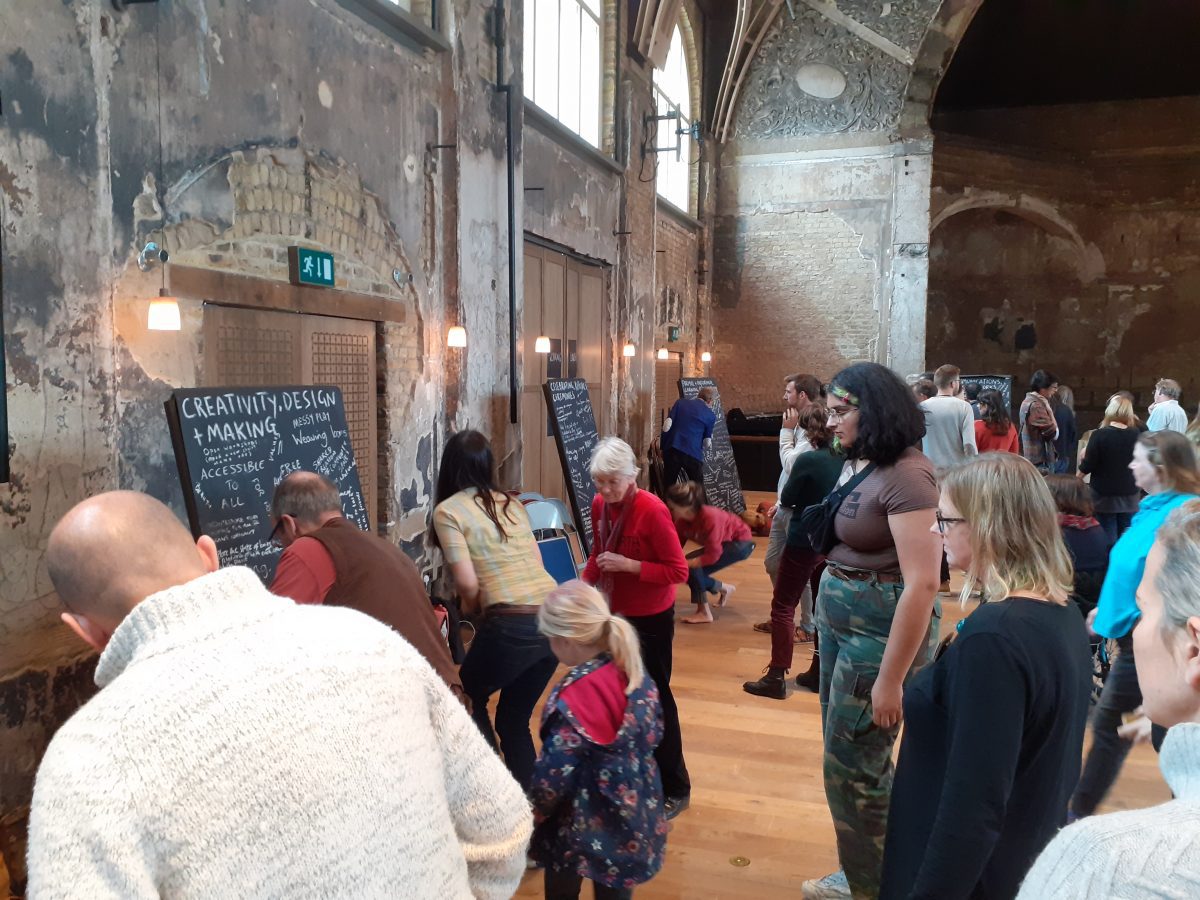
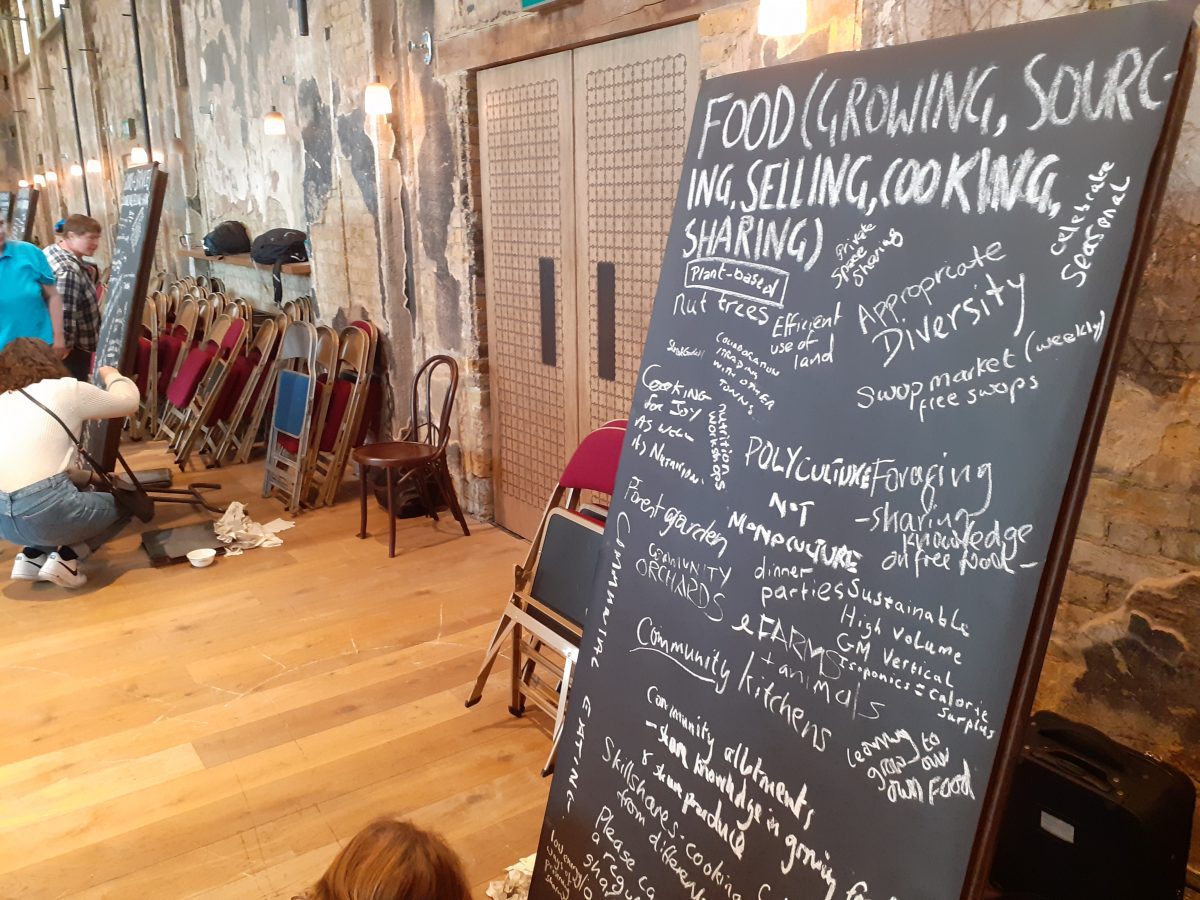
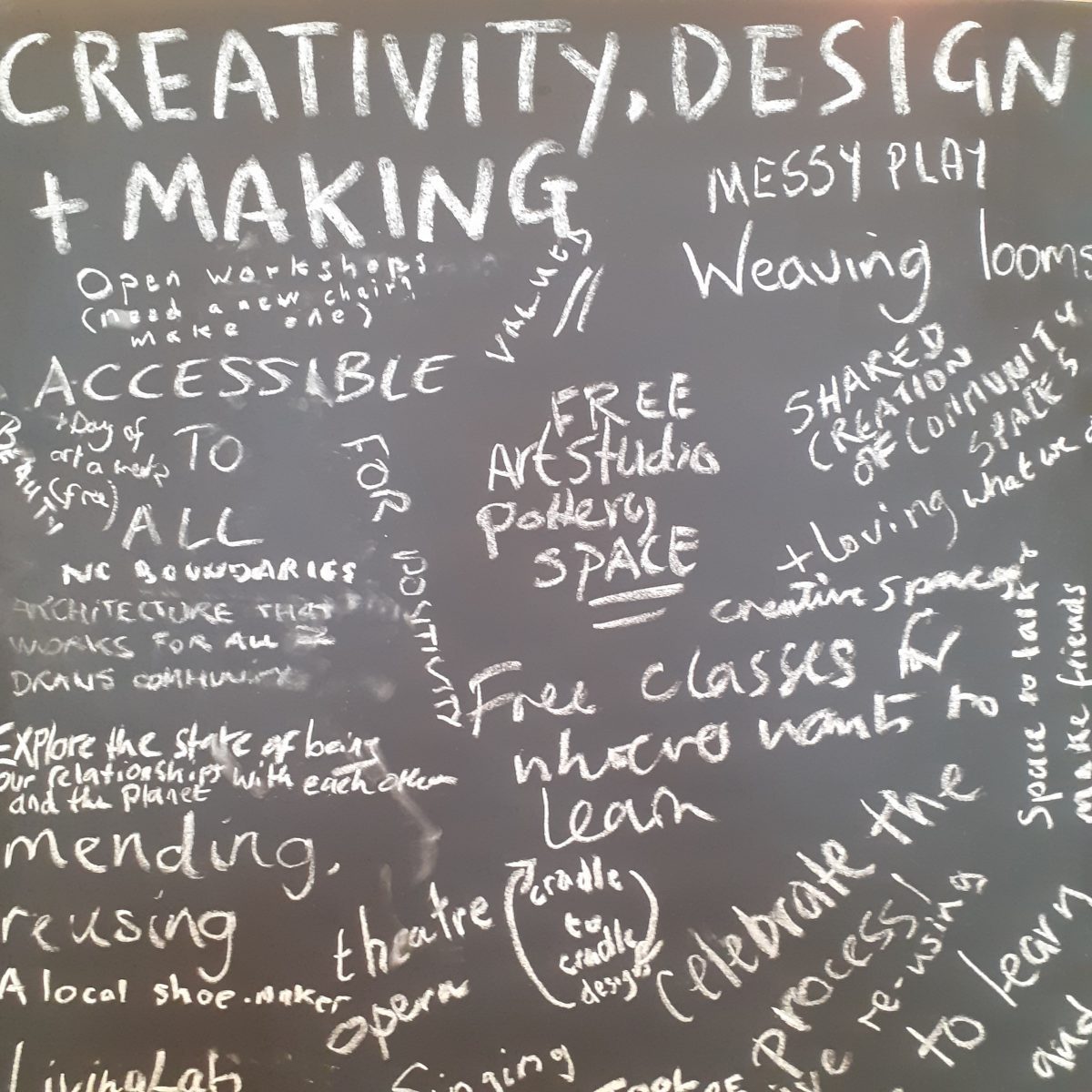
“I felt drawn to the group focusing on governance, law, justice and community decision-making and very quickly found myself in a small sub-group that had decided to create a community response to behaviour that was causing problems for the neighbourhood. We were rather proud of our project name, “Transforming Transgression – justice without judgment”. We had some great experience in our little group – people who had an understanding of how the criminal justice system works now and some exposure to alternative approaches such as restorative justice or restorative circles. It felt really exciting to start to design a centre based on very different values and principles to those that currently underpin our deeply dysfunctional justice system and I was surprised by how little disagreement there was in the group. I was also conscious that we were so busy constructing our restorative justice centre out of willow, cardboard and newspaper that maybe we had quite different assumptions about what we were creating”. Sarah McAdam.
“I think the main thing that surprised me was how much I enjoyed it! It was fun to construct something physical and essentially be given permission and encouragement to play, without worrying too much about the aesthetics or function of what we built”. Greta Hughson.
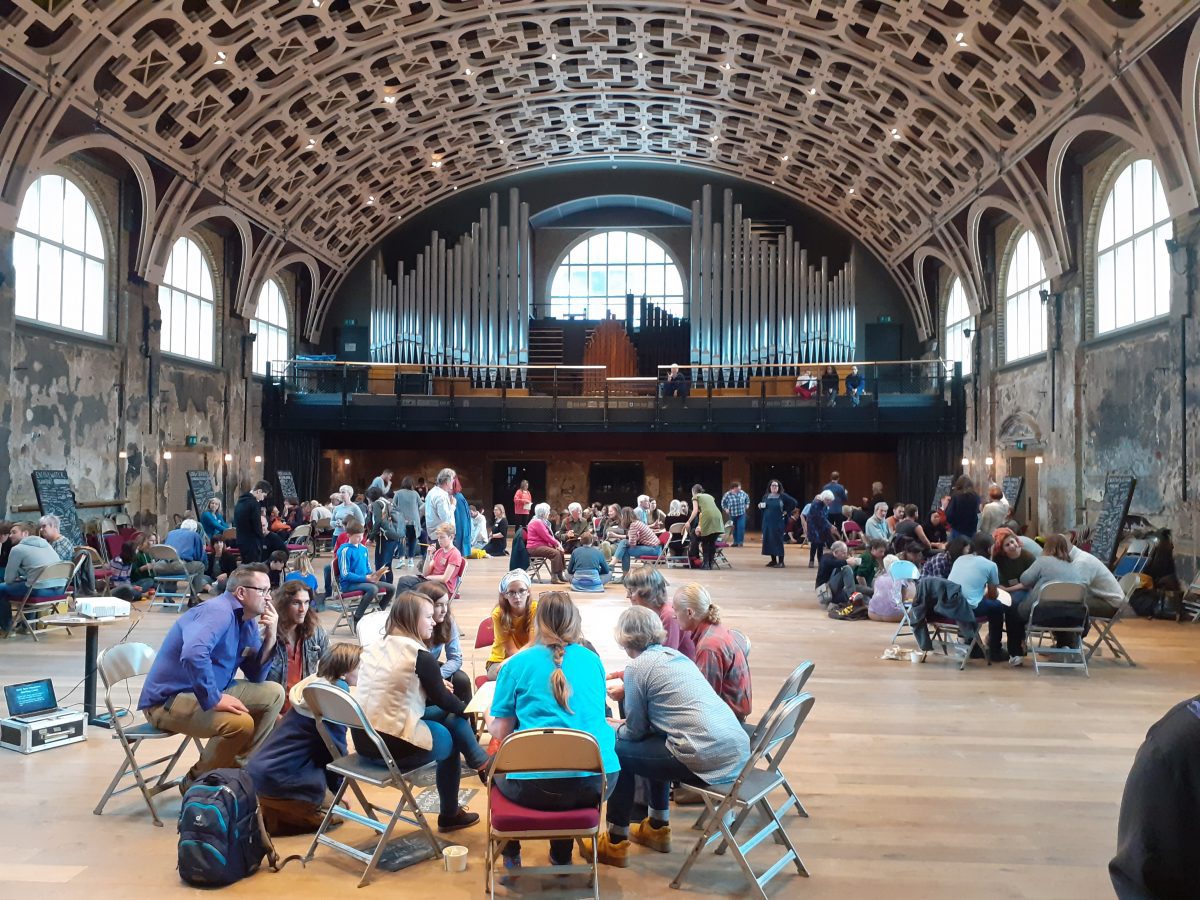
“I joined a group working under the theme of ‘Communications and Civic Networks’. We identified a deficiency of listening in the world of 2019 we had left behind, and decided to build ‘The Listening Bridge’ that would help different communities come together regularly to discuss any issues of concern. Listening to, and recognising the concerns of different, often marginalised, groups within any community is key to its sustainability and the flourishing and harmony of society at large. After constructing our Listening Bridge, I toured the town, speaking to various other groups. More than anything else, I was very impressed with the variety of creative concepts in the town. This ‘Town Anywhere’ UK, had literally emerged from thinking out of the box”. Nick Anim.
“I loved the moment when the making began the whole room got busy and buzzing it was like a hive”. Ruth Ben Tovim.
“When I got the opportunity to explore the rest of the town, I was delighted by what I found. Great ideas – some of which I might also have imagined and some which felt completely surprising. I loved the listening post (a place for personal support), the radical reimagining of a school, the place where young people could socialise and input into the democratic process. As I talked to people in other groups I found that pretty much all of their projects had some potential to connect with the one I had been working on”. Sarah McAdam.
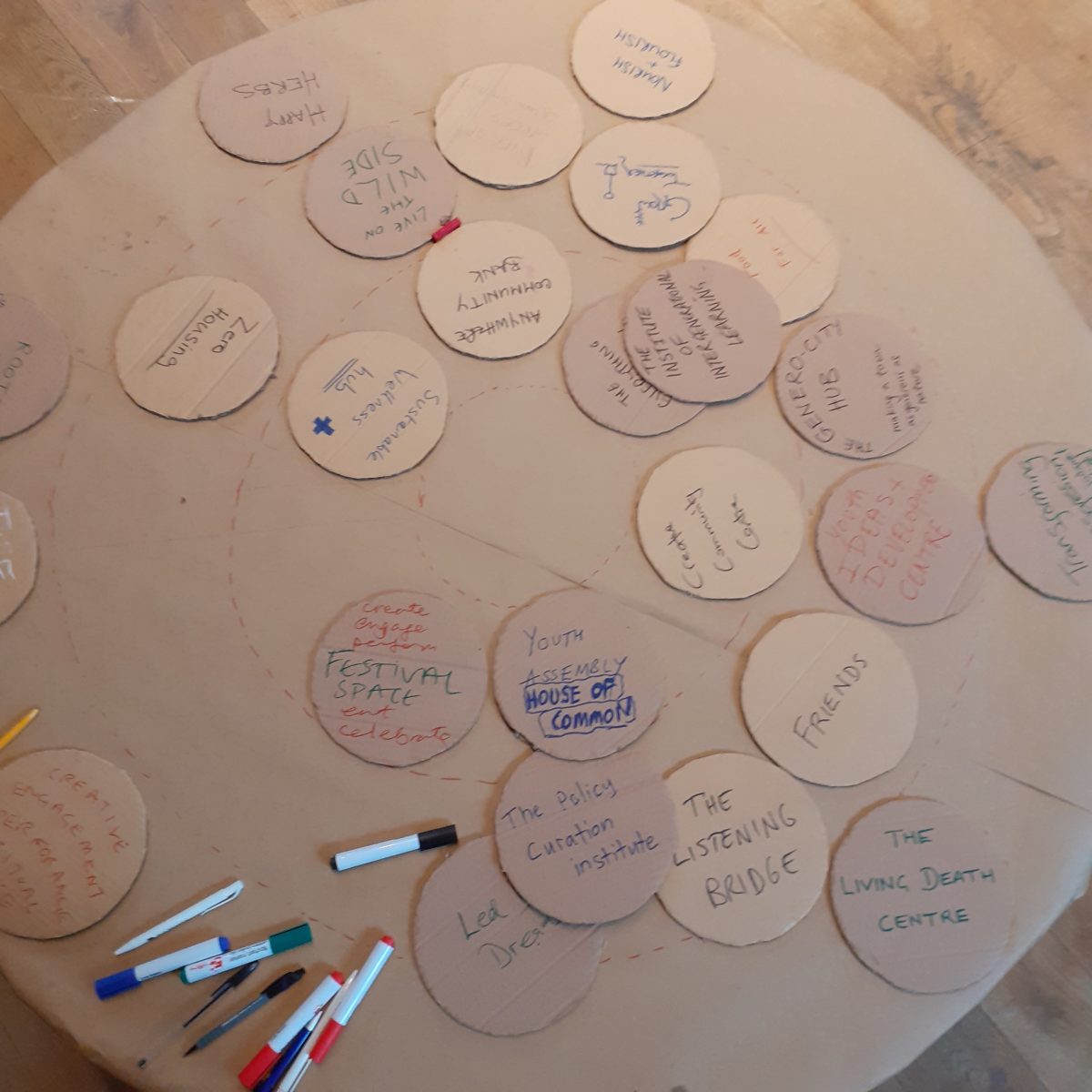
“It was good to see other projects but I didn’t get a sense we were in town because the layout was unrecognisable. It was more like walking around a hall with constructions randomly placed around it. Also there wasn’t that much time to visit more than a few. I stayed at ‘home’ for a bit then only ended up having time to see two other projects”. Rob Shorter.
“Wandering around, I felt really inspired by the other groups and their ideas. Some of the constructions were great (the tram, the community energy) but even more so some of the groups that had formed, around listening, skills sharing, and justice. It felt like a positive, thoughtful, gentle place to live”. Greta Hughson.
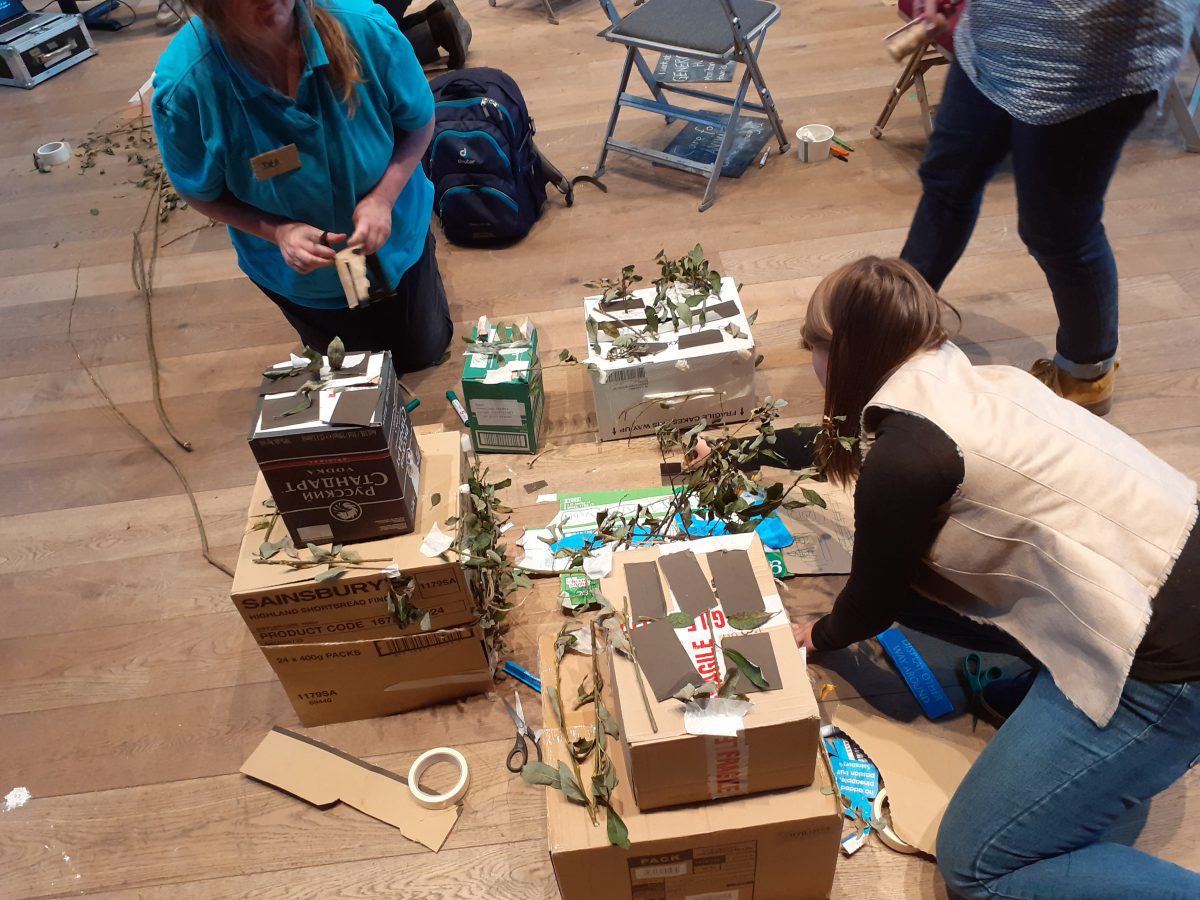
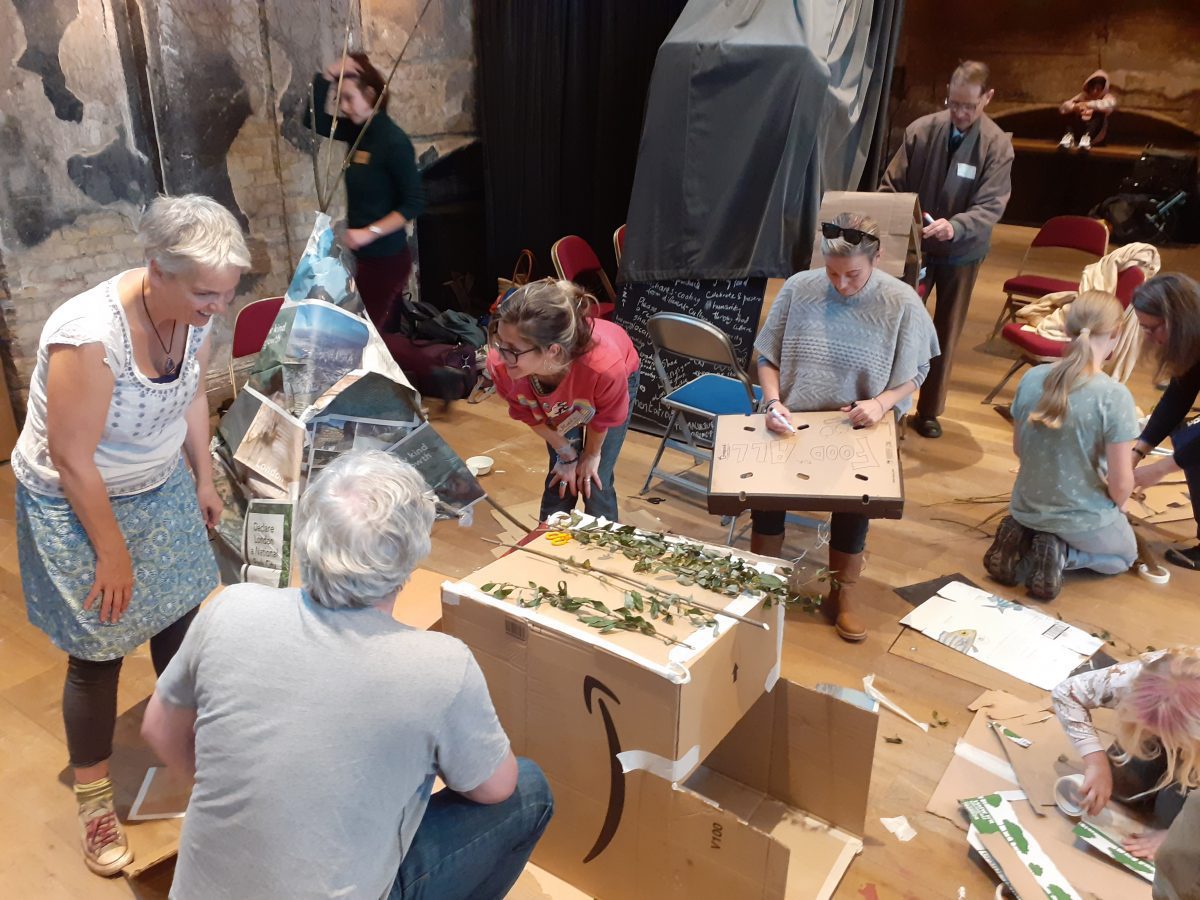
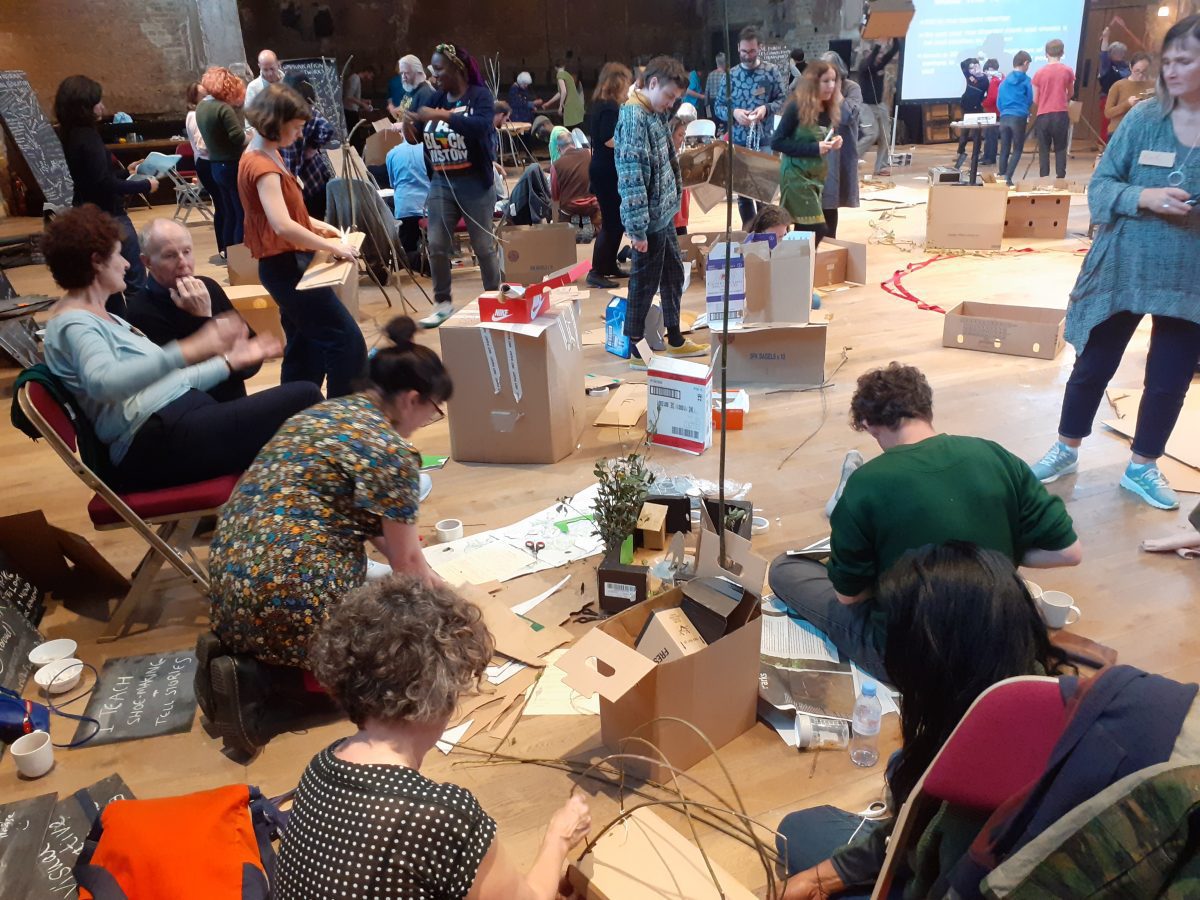
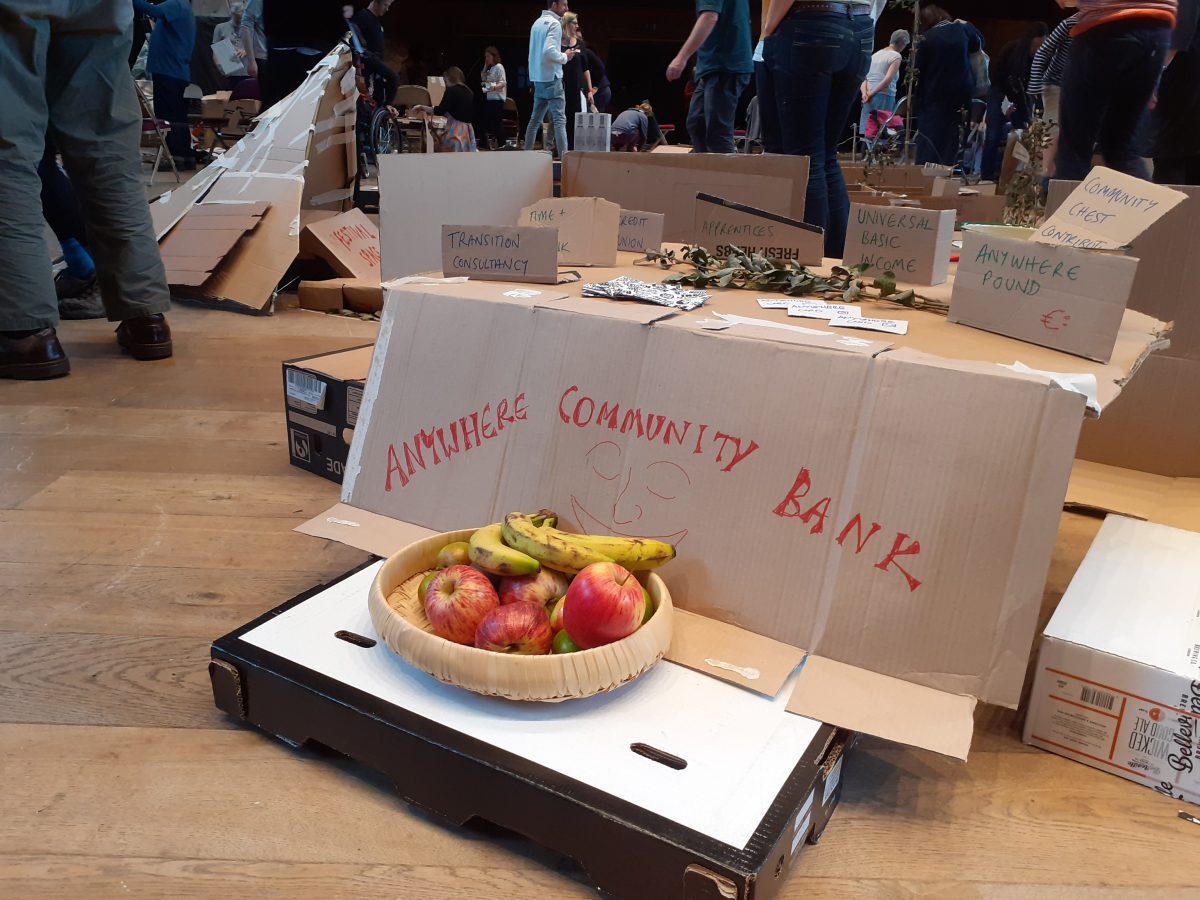
“Once the sounds of ripping, tearing, stretching, chatting, chopping, sorting, snipping get going, it brings its own energy to proceedings. Happiness by any other name. Nothing seems to create happiness like time and permission to make shape and create: flow. I think the readiness of the materials also makes a difference. Nothing precious except in the making. Music also a great element to carry the moment”. Lucy Neal.
“There was a part missing for me which I’m looking to explore further, which is the moment between forming our small groups and coming up with the project idea. What does that bit look like, in the crucible of imagination? How can that bit be cultivated a bit more? Given more time and playfulness?” Rob Shorter.
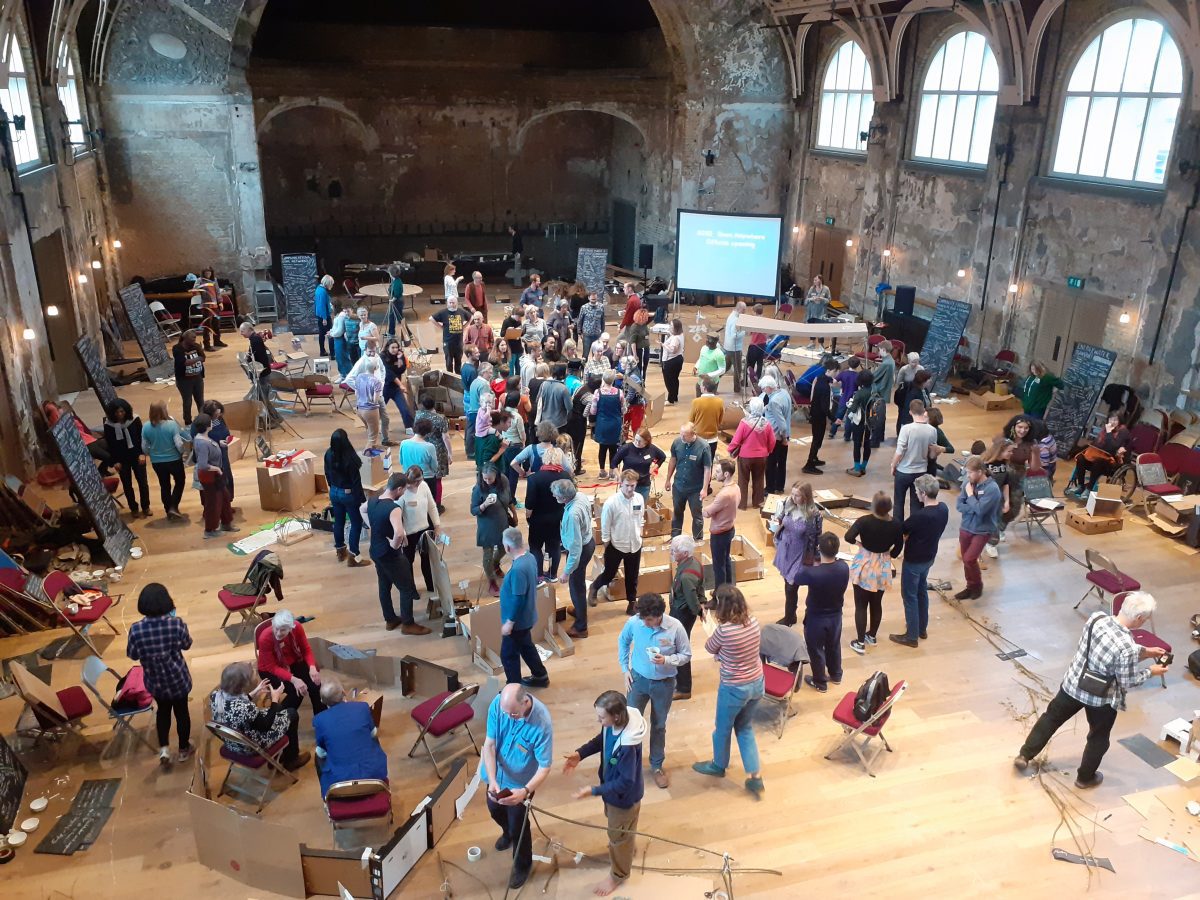
“As the day came to an end, we were asked to count backwards and return to 2019. I certainly did not expect the feeling of gloom that suddenly overwhelmed me. We were being asked, it seemed, to go back to into the burning house with all the environmental and social injustices that defined the zeitgeist of ‘business as usual’. It would have been easy to hold on to that initial feeling of doom and gloom, to allow a mood of creeping depression to lead the way out. However, something most powerful had been unlocked from the institution of imagination”. Nick Anim.
“Leaving the hall empty is powerful – looking back into an empty hall and having to remember what was built, calling on memory where one had only just called on imagination. Bit brutal but the ephemeral is strong”. Lucy Neal.
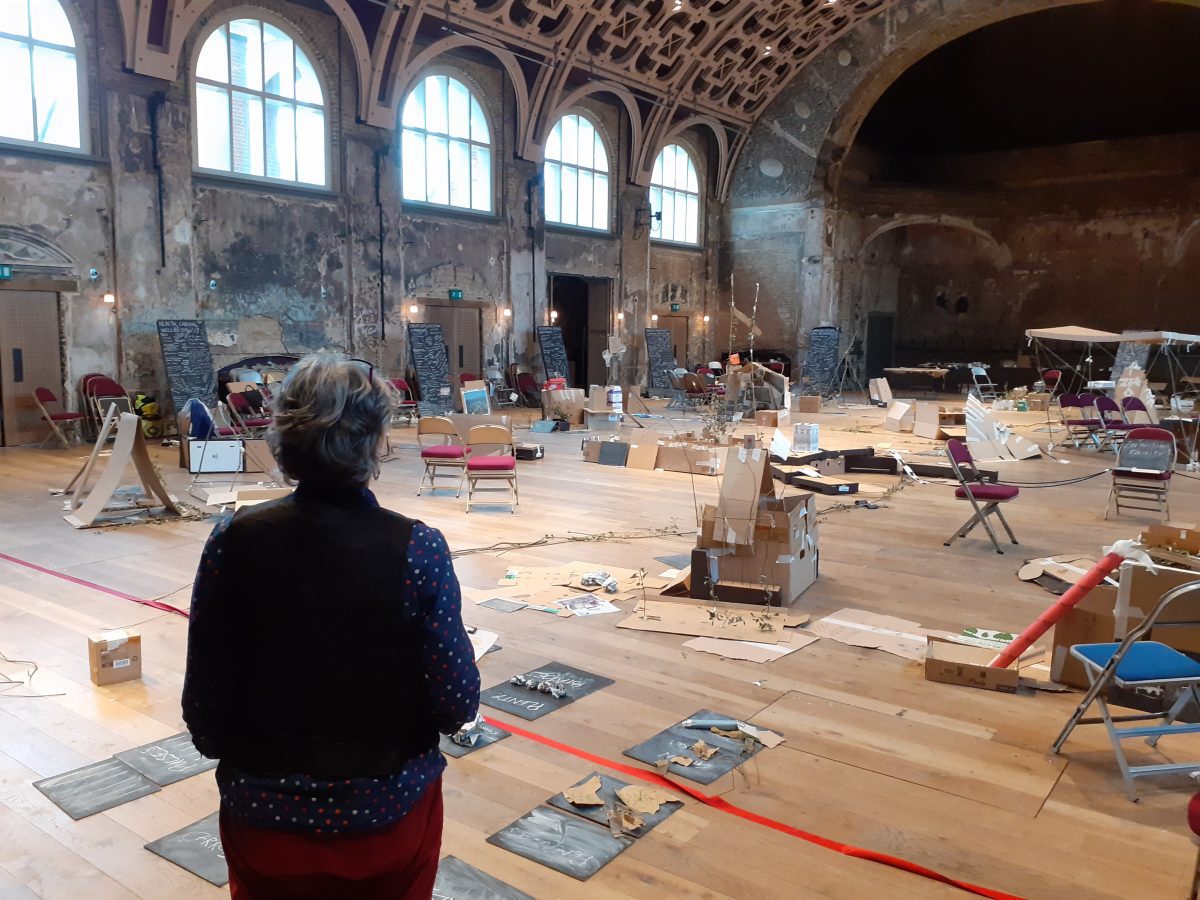
“I’m glad we added the feedback process and the postcard allowing space for some reflection and feedback”. Ruth Ben Tovim.
“I found the postcards we wrote from future self to our 2019 self really compelling. People expressed such moving ideas about the optimism and hope that they felt through imagining a positive future. I felt connected to that future, in the sense that what I do now has the potential to impact the future – and also that things take time to build. The time to start is now”. Greta Hughson.
“Pop Up Tomorrow, for me, was super special, and sits alongside a constellation of events that are guiding our way as we plot our next steps. For me, 2019 became full of them – Oxford Real Farming Conference in winter, CTRLshift in Spring, XR Spring Rebellion, Stir to Action Festival in Summer, UK Permaculture convergence in September, XR Autumn Rebellion, Pop Up Tomorrow in October and many more – these landing stages are hugely important places for us to build our trust and relationships, share our practise, support each other and weave our new narrative, imagining all the way. We really are taking this ginormous risk together as we reimagine the future – LIVE! The biggest theme for me is to do it all with intent, know where your best placed to thrive and let others put their energy where they can thrive, this was so evident at Pop Up Tomorrow”. Richard Couldrey.
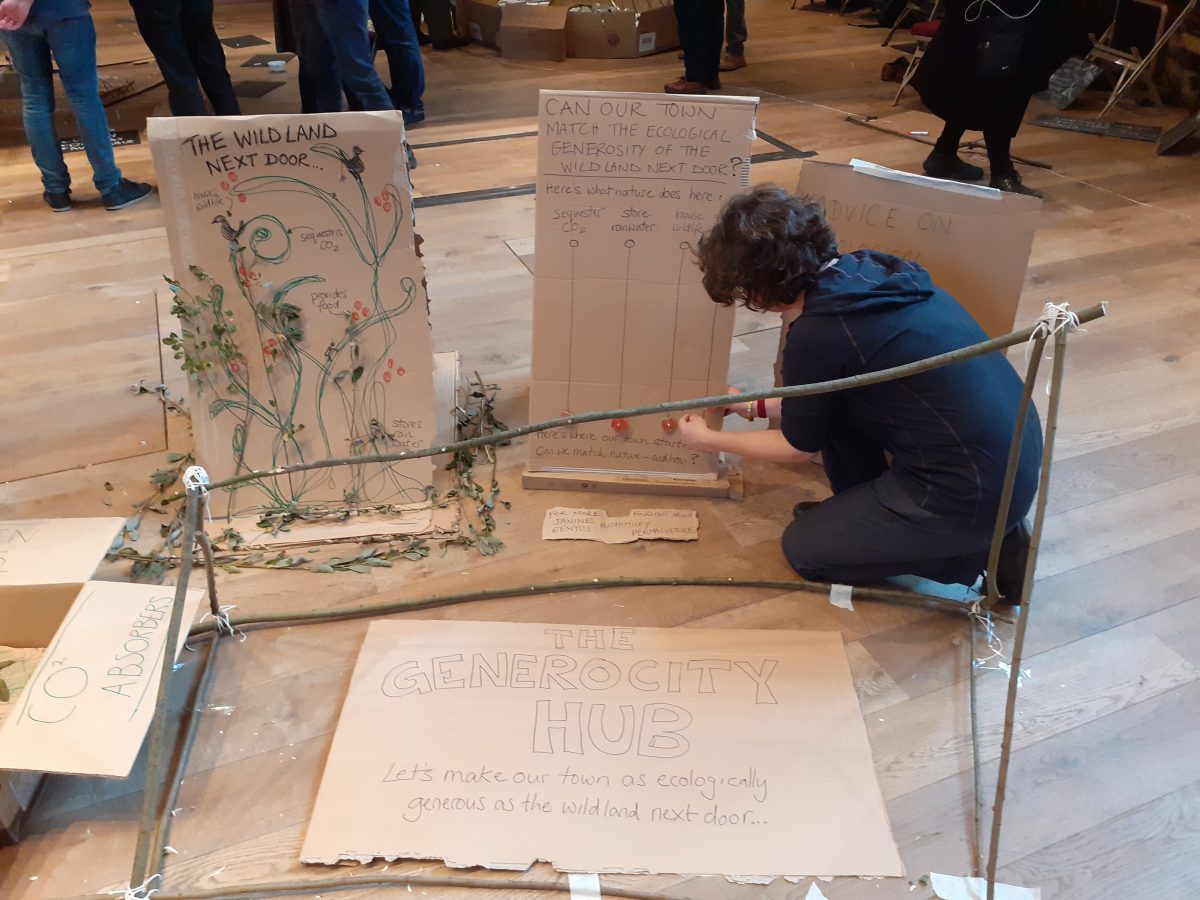
“The whole experience was unexpectedly energising! Having spent time at the Extinction Rebellion protests in the days beforehand, I was pretty tired and drained when we started. I arrived home at the end of the day feeling like I’d been recharged and that feeling stayed for a while afterwards. XR had been about saying a loud, firm ‘no’ to business as usual and also supporting and holding space for people to express grief, despair and anger. Pop Up Tomorrow allowed me to reframe all of that into a way forward, for us collectively and for me personally”. Greta Hughson.
“I was soon organising a People’s Assembly with my colleagues in Transition Town Brixton, which we delivered on the 25th of November, using many of the same processes we learned at Pop Up Tomorrow”. Nick Anim.
“It was a joy to be a part of the day and the warmth of feeling and connection with others after the experience was a powerful memory. I am interested to see how it could be re-run for collectives of people that are more diverse in their background, experience and outlook/worldview. Could it be even more powerful with a ‘balanced’ collective of people?” Rob Shorter.
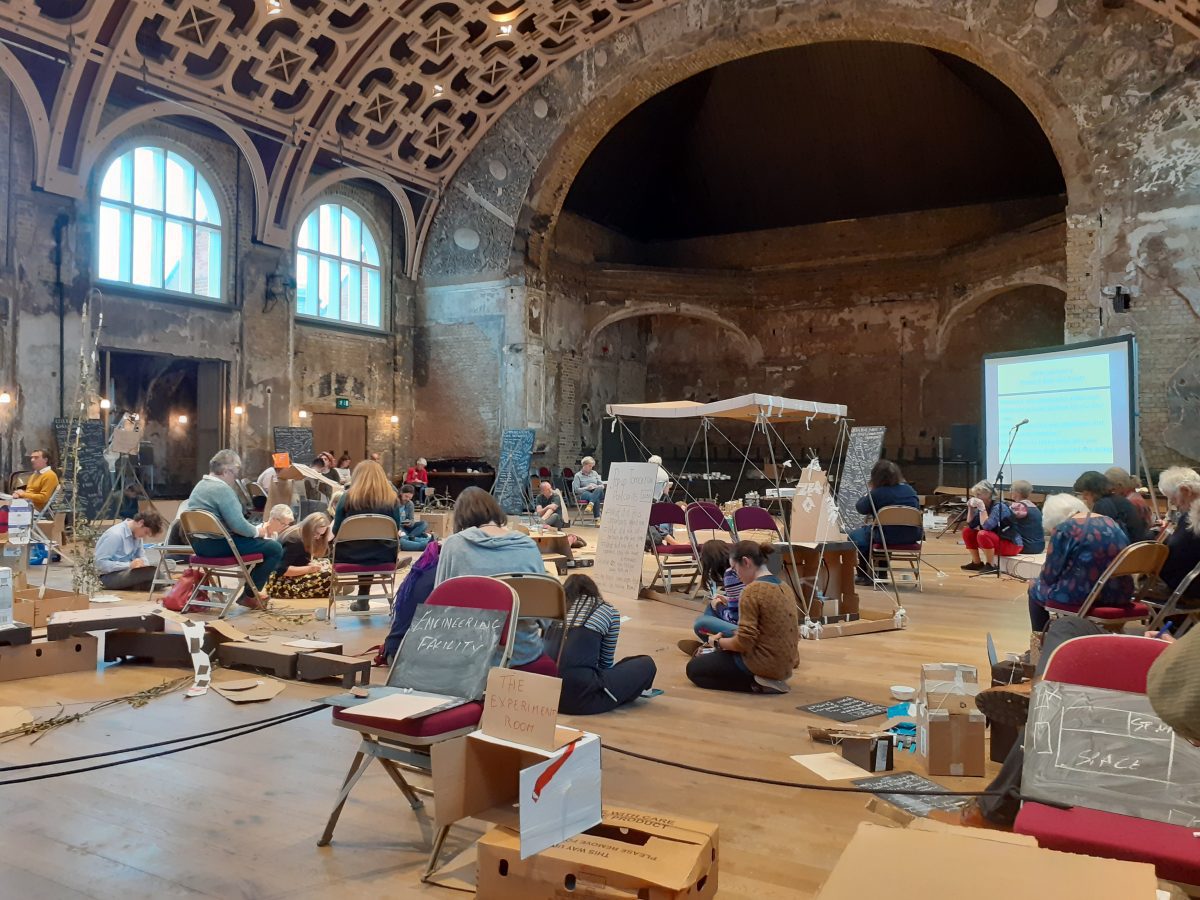
“What would I have done differently? I would have liked the ideas to have been framed more in Global Justice, also to have named more the losses along the way and already happening in 2019 – I think there can be some beautiful projects, ventures, ideas as we face the climate emergency now as well as imagining how we might turn it around… so I would try to include that more in peoples dreamings and plannings”. Ruth Ben Tovim.
“I think the ideas that came out lacked some business feasibility. In other words, how were all the needs of the community being met, including goods and services, and how were they being financed? It would have been good to get to the idea-creating bit sooner so we could have then looked at all the ideas and recognised gaps. Or maybe we could have something on meeting the 9 fundamental human needs of Max Neef?” Rob Shorter.
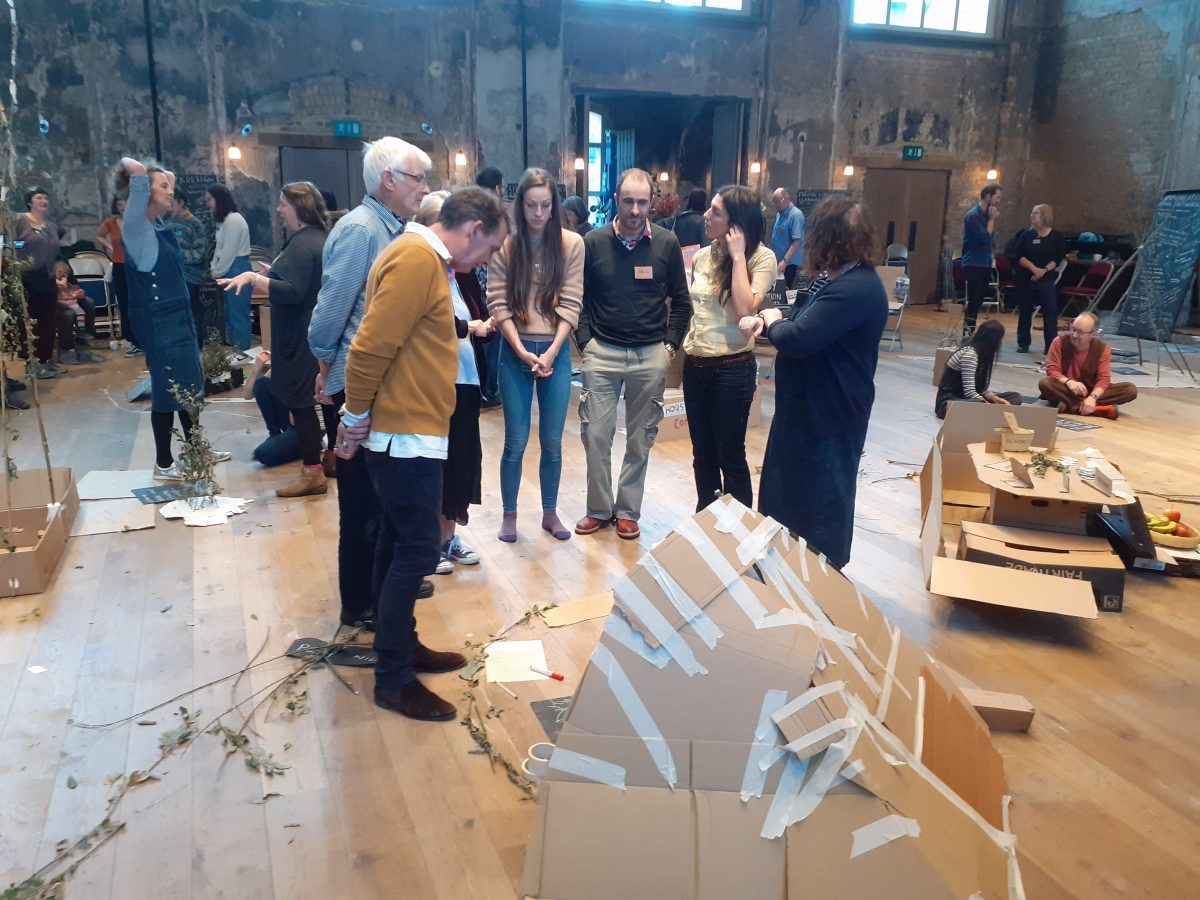
“Two things I noticed at the end, there was a feeling of sadness having to come back to the present from that imagined future. I also loved the feeling of quiet intensity when people wrote their messages to themselves at the end. I took a couple of pics, one of a small boy sitting in a box in a pile of cardboard, totally intent on his letter. It was a real moment of stillness in hubbub of the day (see below)”. Hilary Jennings.
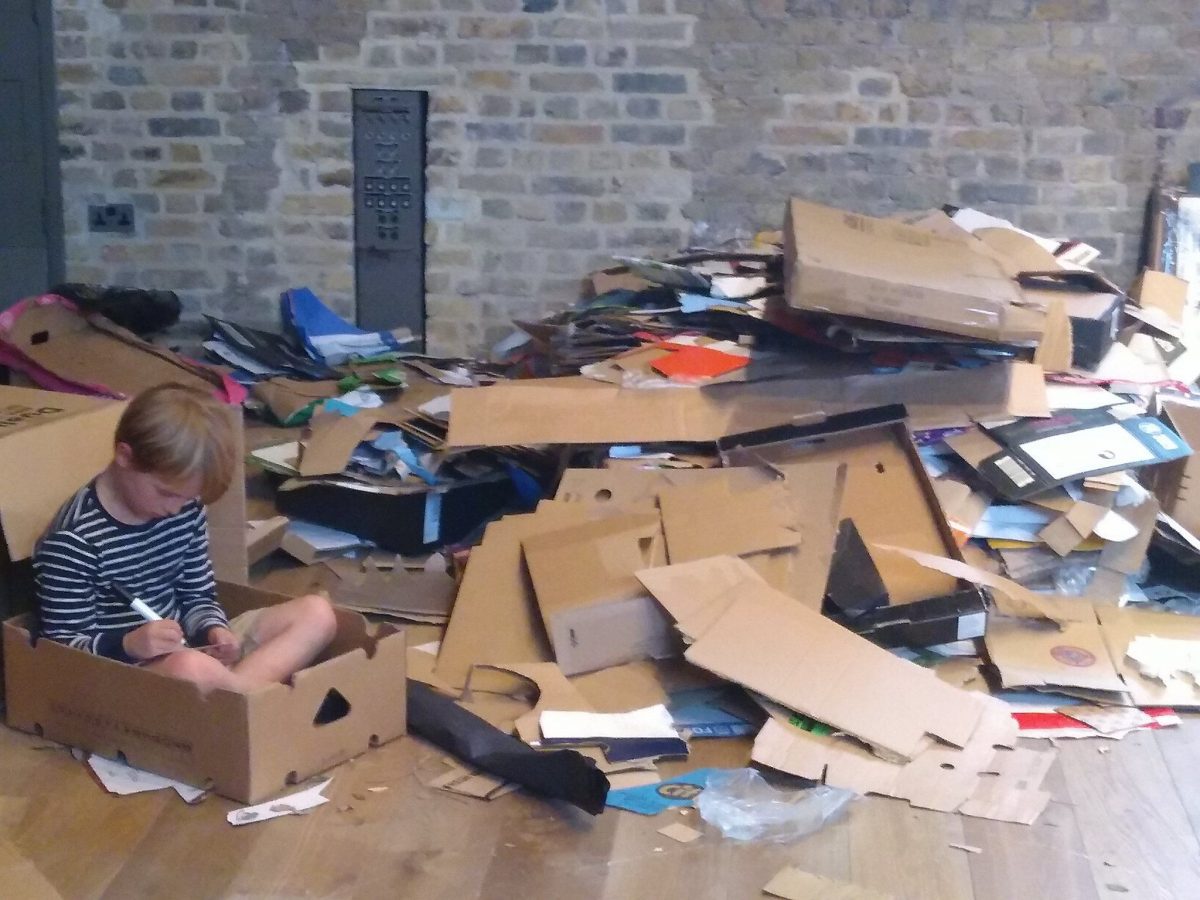
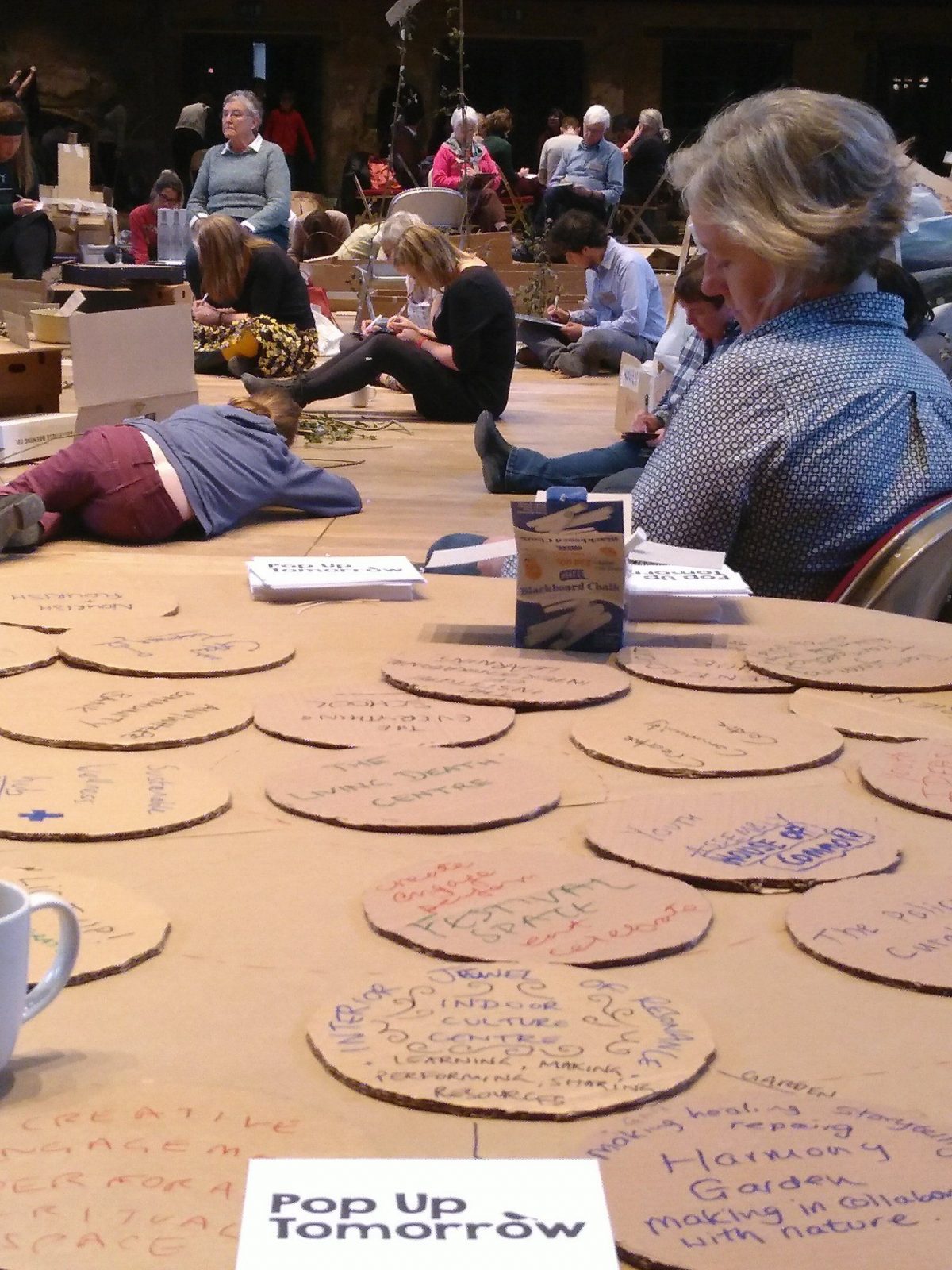
“I thought it was really well put together – I imagine a great deal of thought and work went into making it feel quite simple! The venue, the music, the snippets of speeches, the timing of activities, the blackboards, the boxes and newspaper – it was a great example of how the arts can be used to communicate, to shape responses, to inspire, and to soothe weary activists! It was an experience that I wish more people could have”. Greta Hughson.
